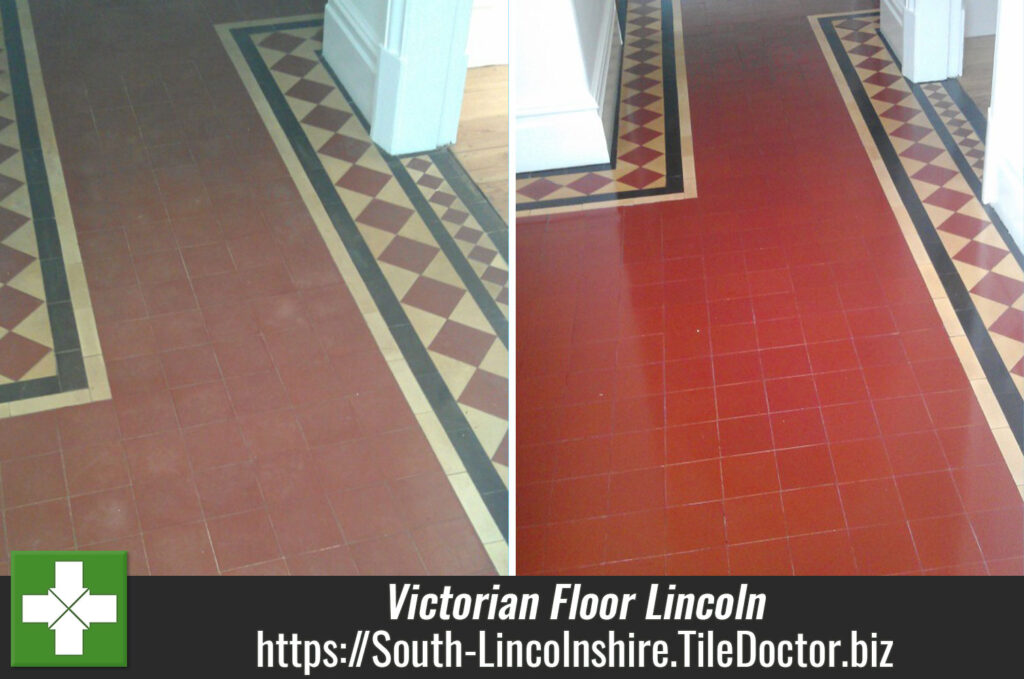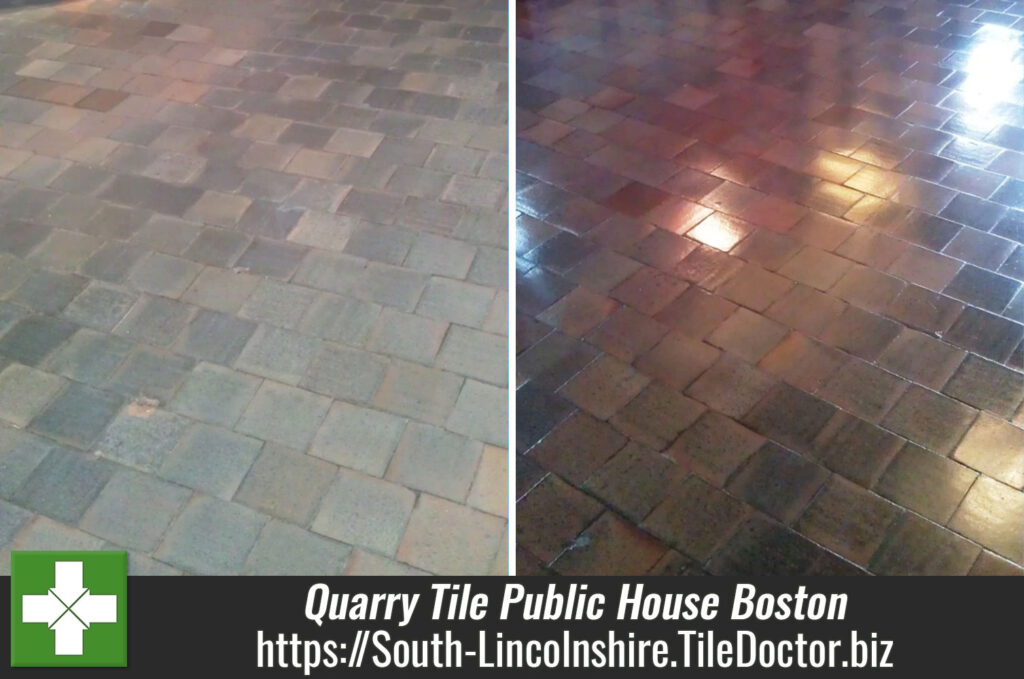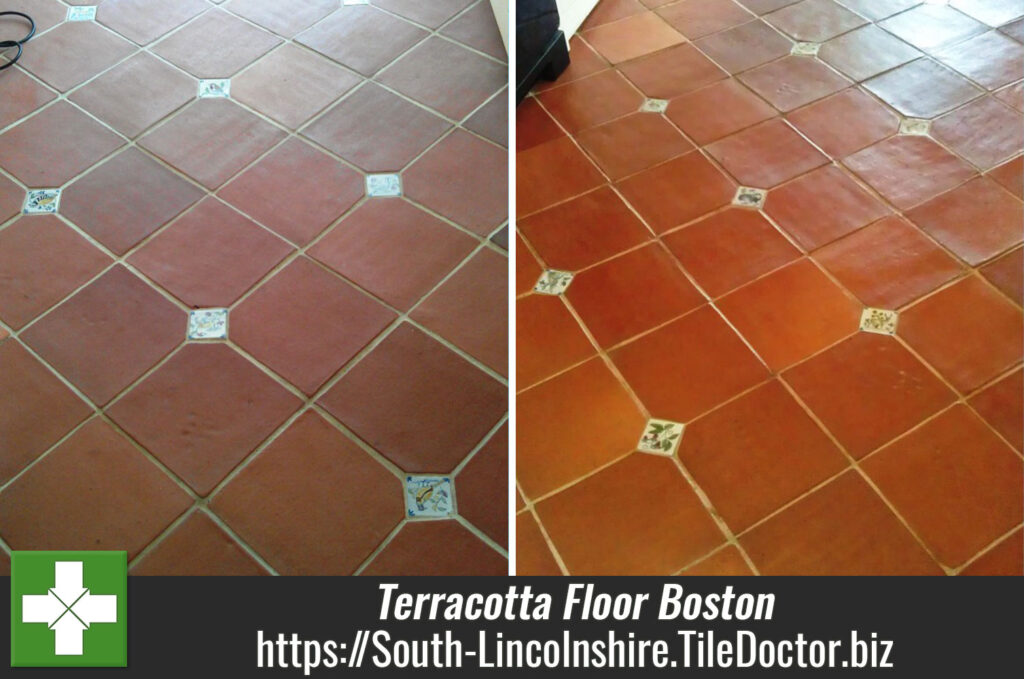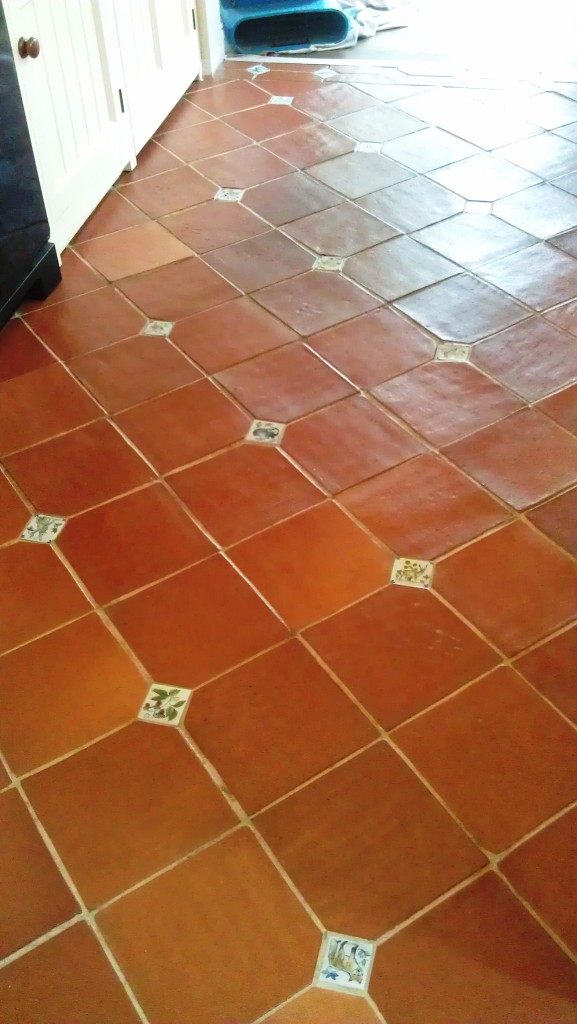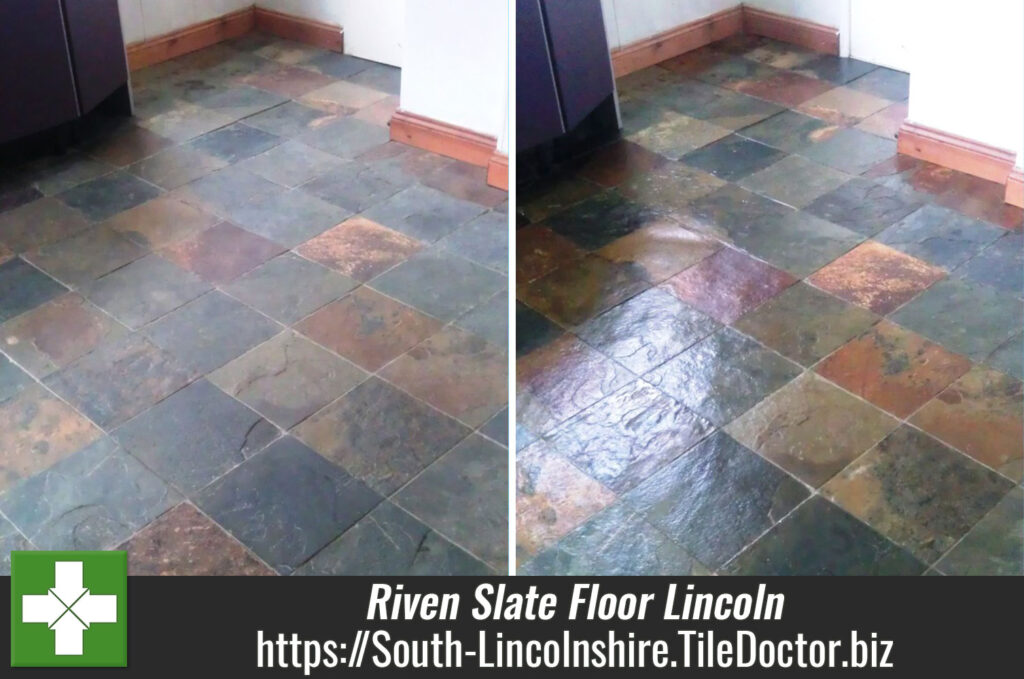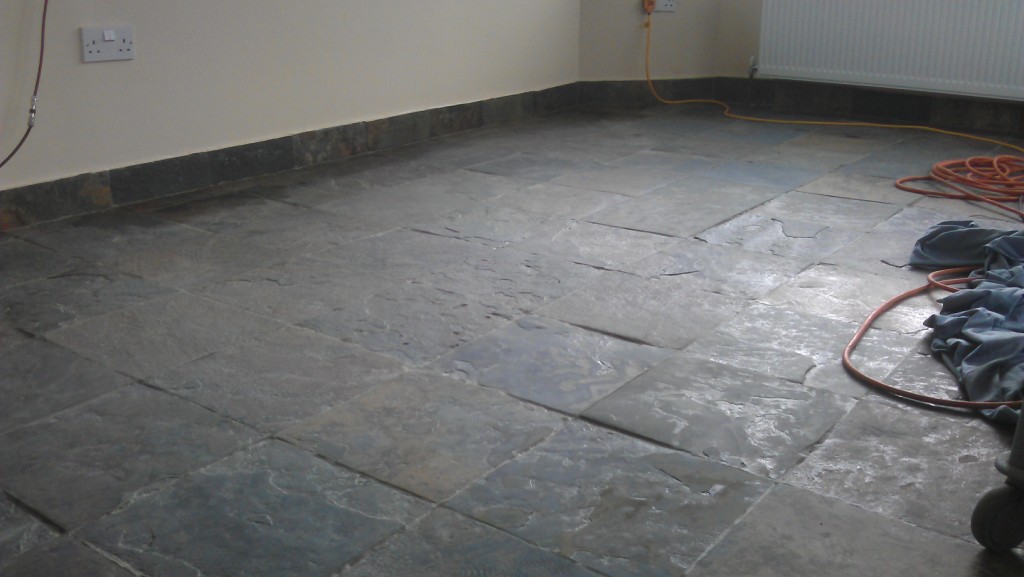Dull and Scratched Limestone Floor Polished in Horncastle
Here we have a beautiful Limestone tiled floor installed in the kitchen and adjacent dining area at a property in Horncastle. We were asked to polish the floor in order to bring up the finish and also remove the fine scratched and etching caused by furniture and pets.
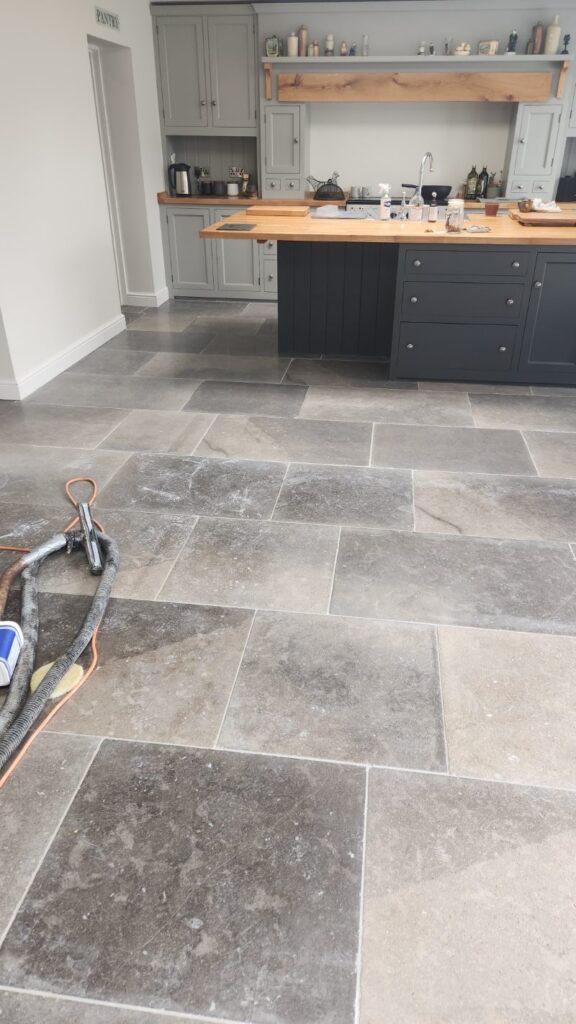 |
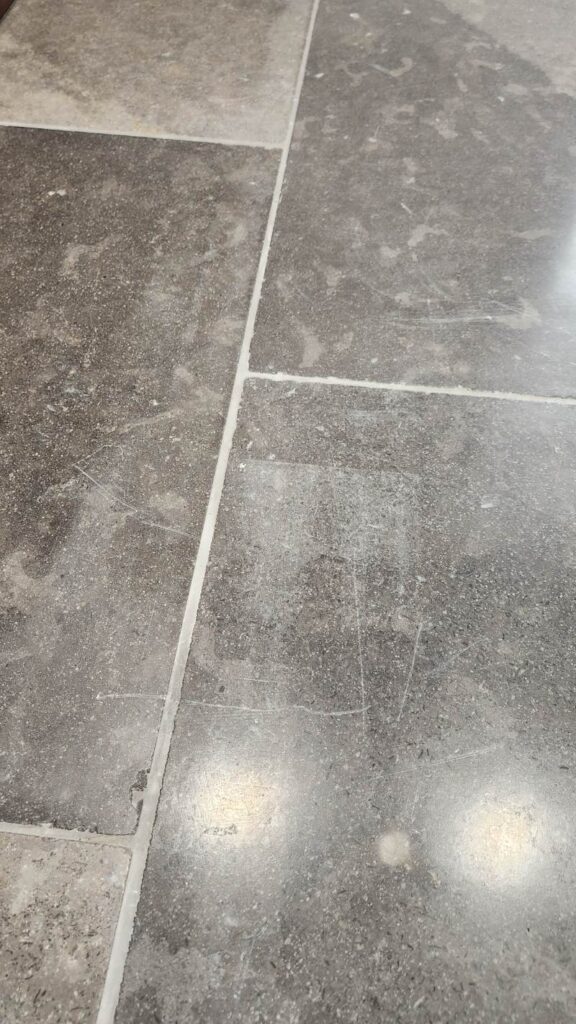 |
Polished stone floors like this one do need regular polishing to keep them looking their best and, in this case, it had been a while since had last been done. After measuring up and investigating a few problem areas we discussed the plan to renovate the floor and worked out a quote for the work. Happy with the quote we set a date for my return.
Polishing Limestone Flooring
To remove the light scratches and bring up the polished appearance of the stone the best course of action is to hone the stone with a set of diamond burnishing pads of different grits. After adding protection to vulnerable areas, the burnishing work then started with a coarse 400-grit pad fitted to a rotary machine which had extra weight added to increase traction with the floor.
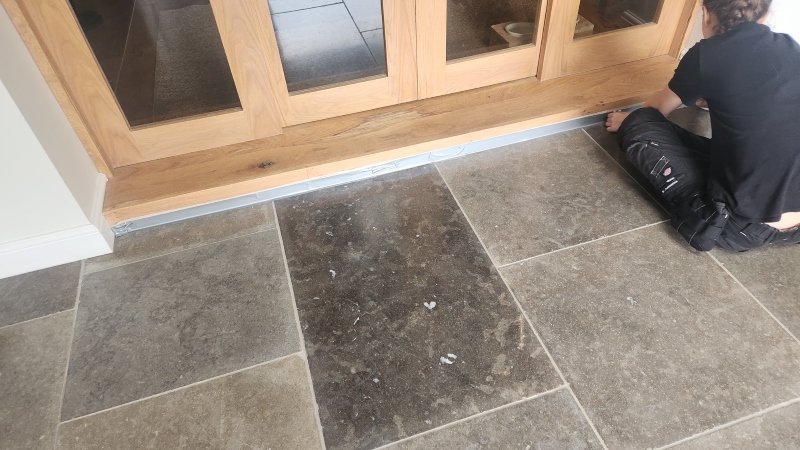
The 400-grit pad removes old sealers, light scratches and opens the pores in the stone so the dirt can be flushed out. Once the pad has been run over each tile several times the floor is rinsed with water and the soiling extracted with a wet vacuum.
The pad is then swapped out for a medium 800-grit and the process repeated and then again with a fine 1500-grit pad. These pads close the pores and build-up the polished appearance of the Limestone.
The burnishing process is then finished off with the application of a very fine 3000-grit pad which is applied in the same way but with only a little water sprayed into the floor.
Once complete a floor fan was setup and left to run overnight to ensure the floor would be nice and dry and ready for sealing the next day.
Saling a Polished Limestone Floor in Horncastle
On our return the Limestone was checked for moisture using a damp meter. This confirmed the stone was dry and work could then start to apply the sealer to the floor.
I used a colour enhancing sealer called Tile Doctor Colour Grow for this which helps bring out the natural colours and shades in the stone. It’s also an impregnator which means it works by soaking into the stone, occupying the pores, and thereby preventing dirt from residing there. This ensures dirt remains on the surface where it can easily be cleaned away.
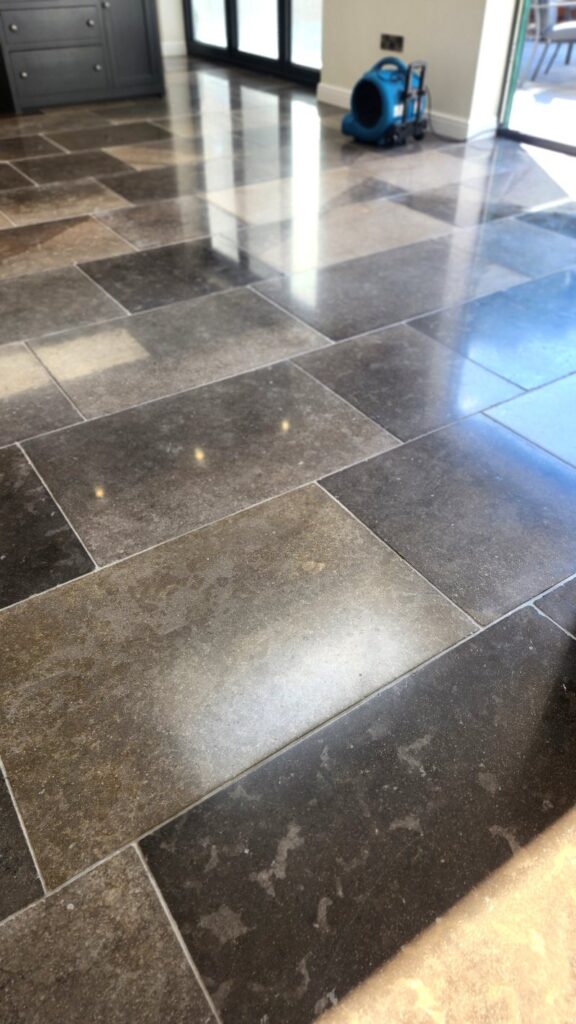 |
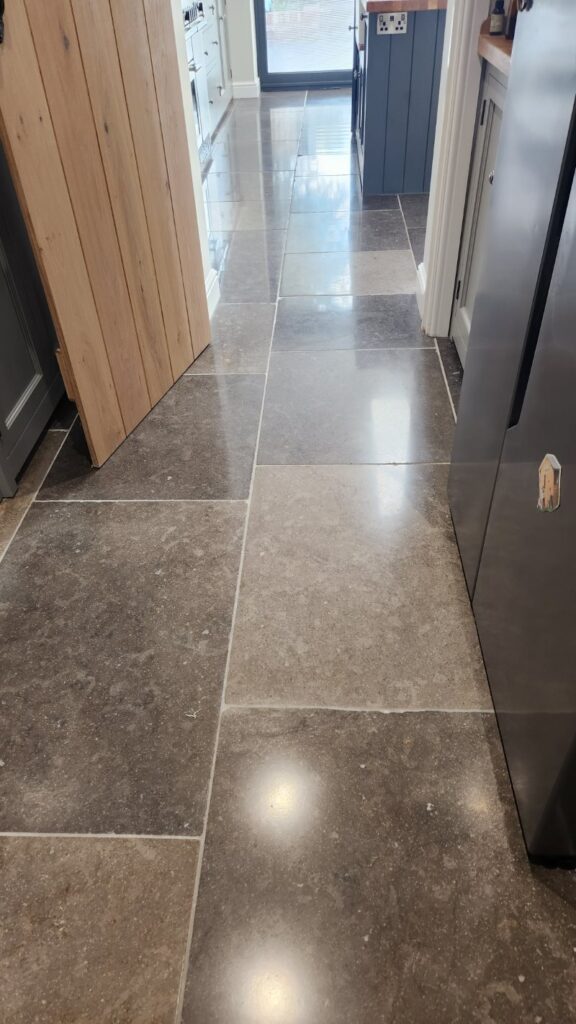 |
Once complete the scratches were gone and the floor looked amazing with a lovely deep polish that reflected the light. The customer was delighted, and the new sealer will ensure the floor is easier to keep clean in future.
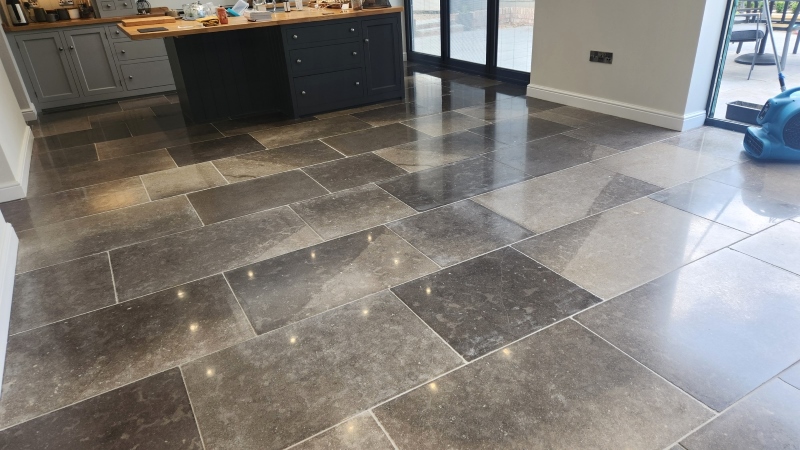
On the subject of maintenance cleaning, we recommend Tile Doctor Stone Soap for polished stone floors, it won’t impact the sealer, and contains a patina enhancer that will help maintain its appearance.
Limestone Tiled Floor Professionally Polished in Horncastle
Dull and Scratched Limestone Floor Polished in Horncastle Read More »

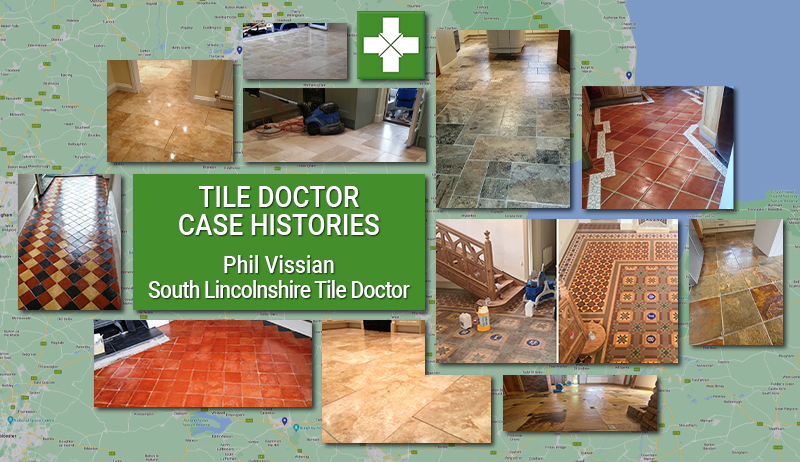
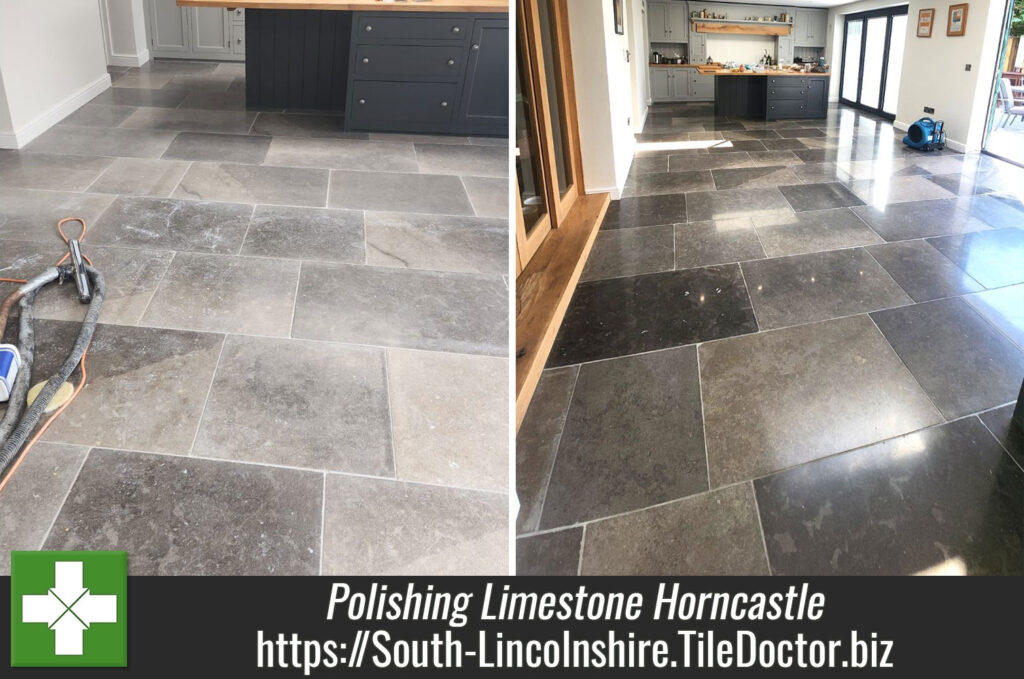
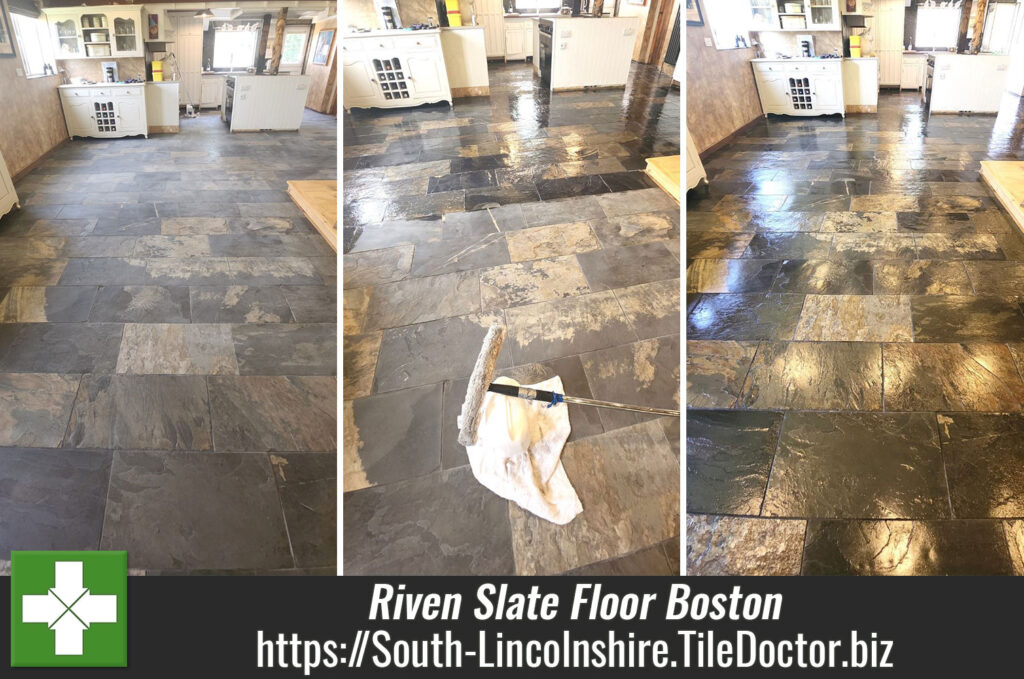
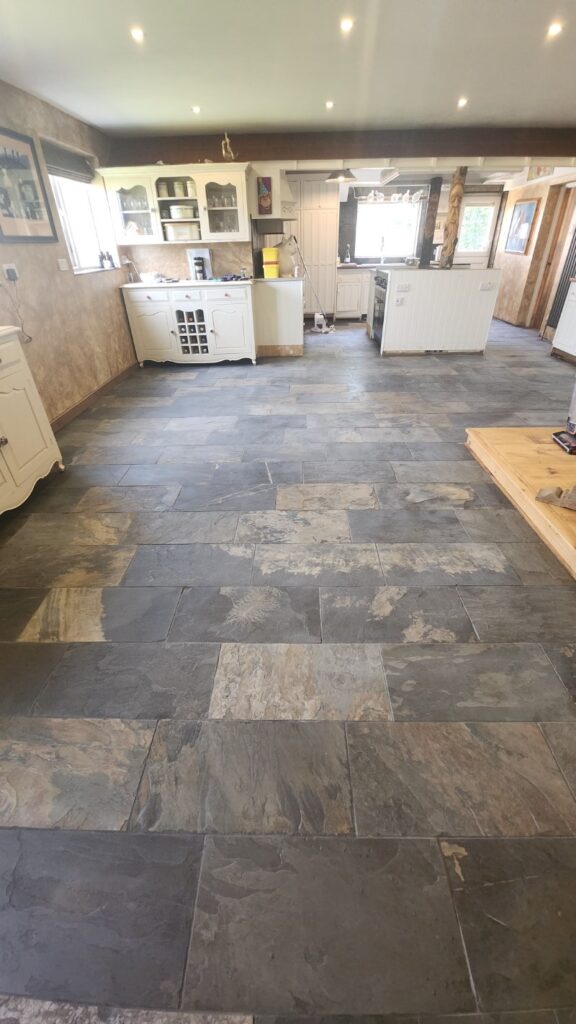
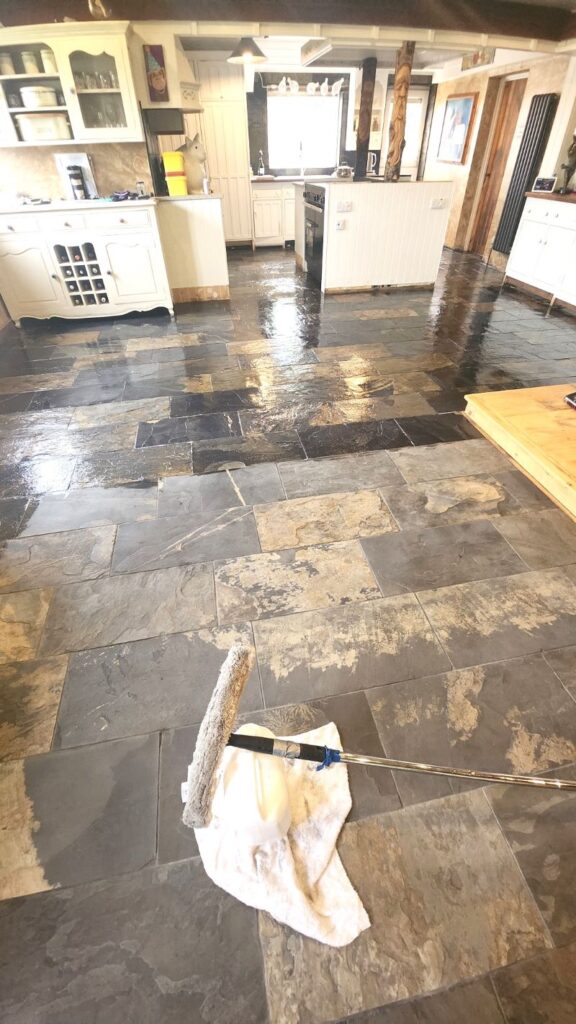
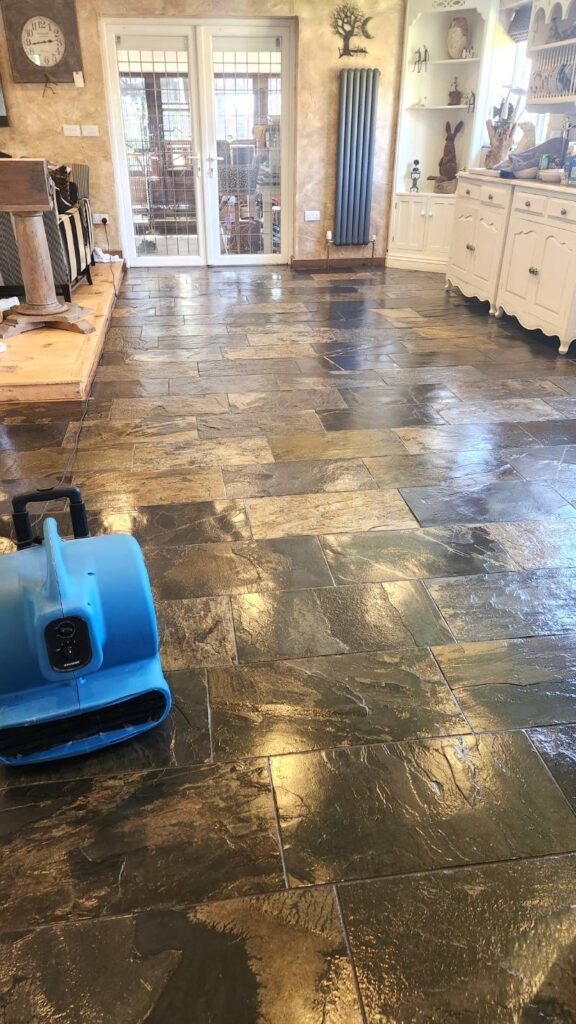
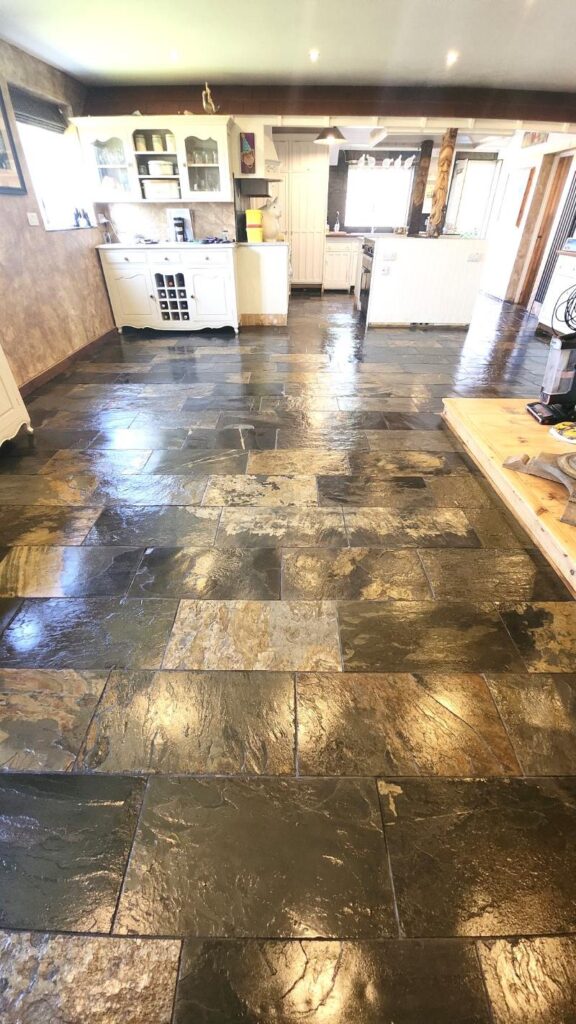
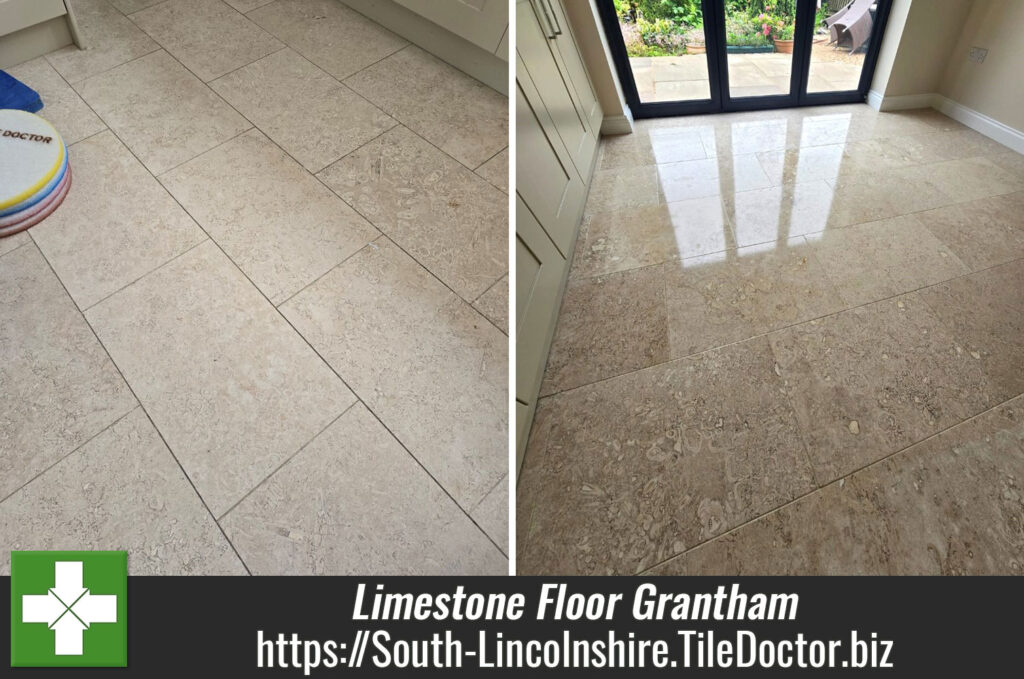
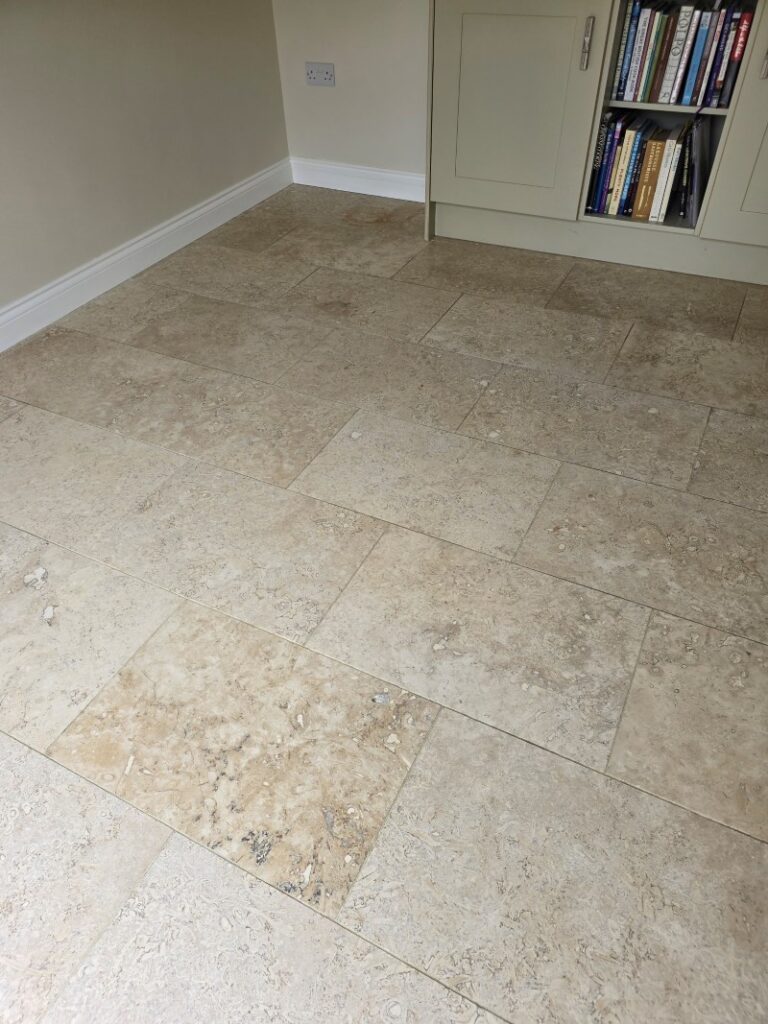
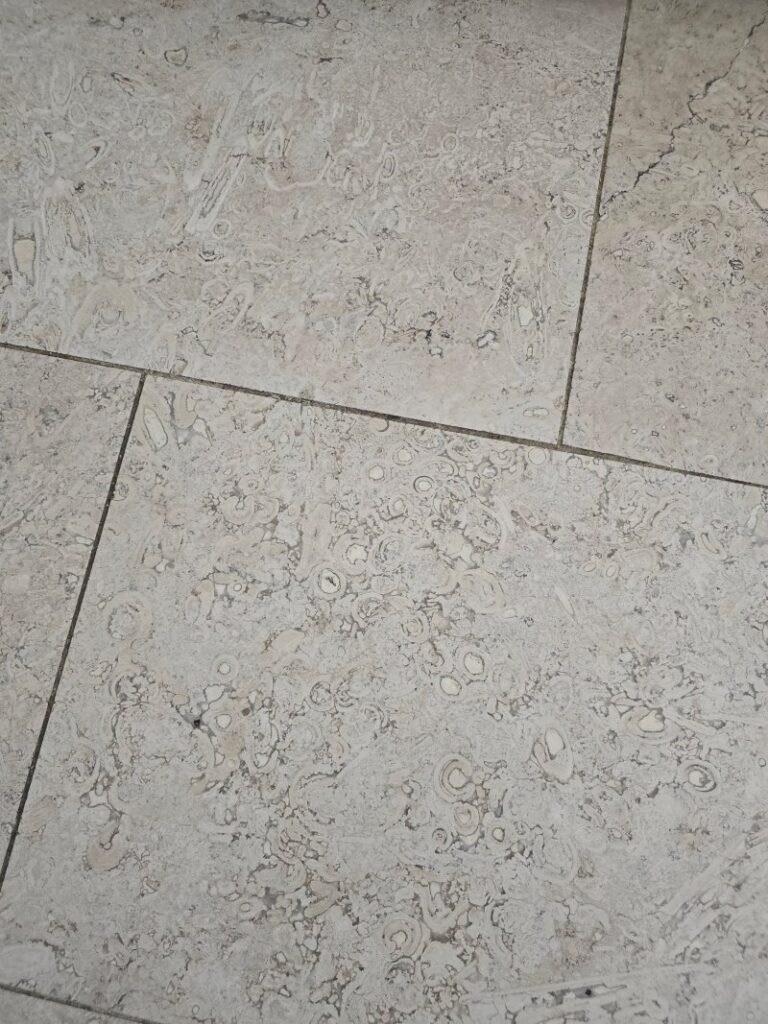
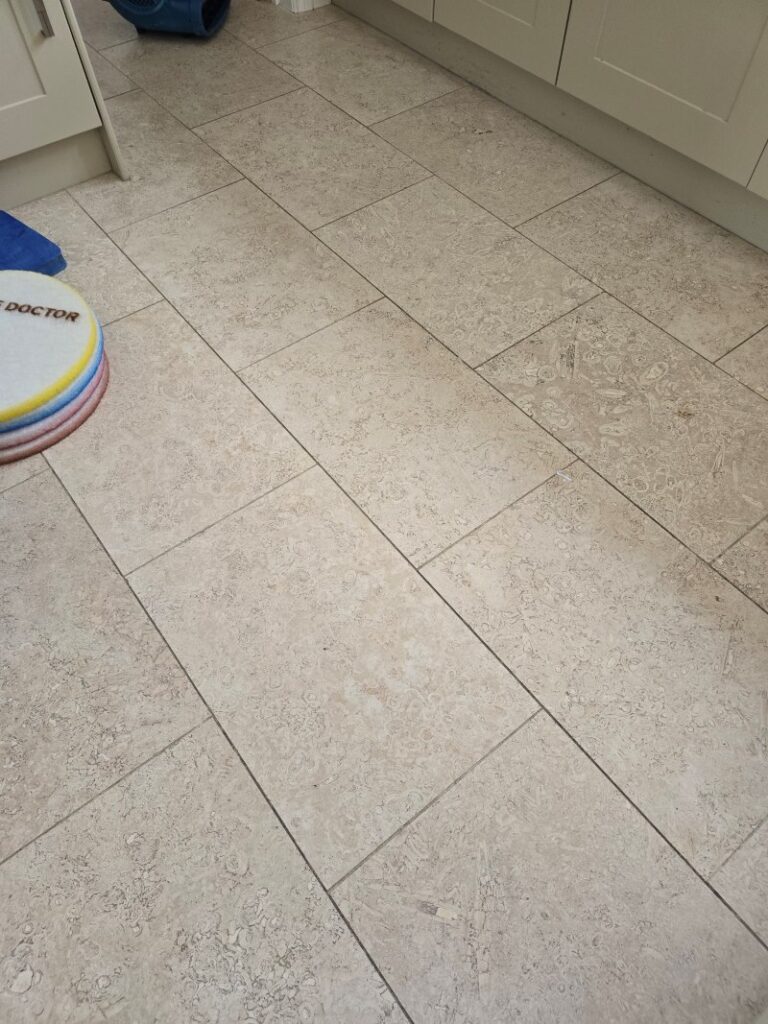
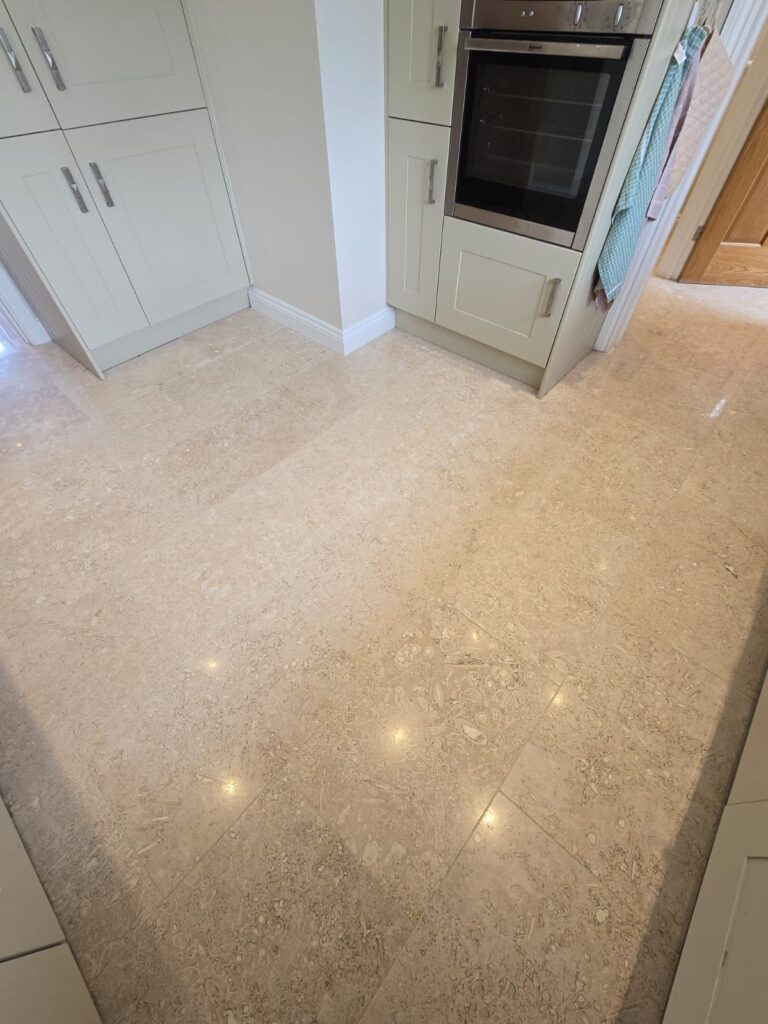
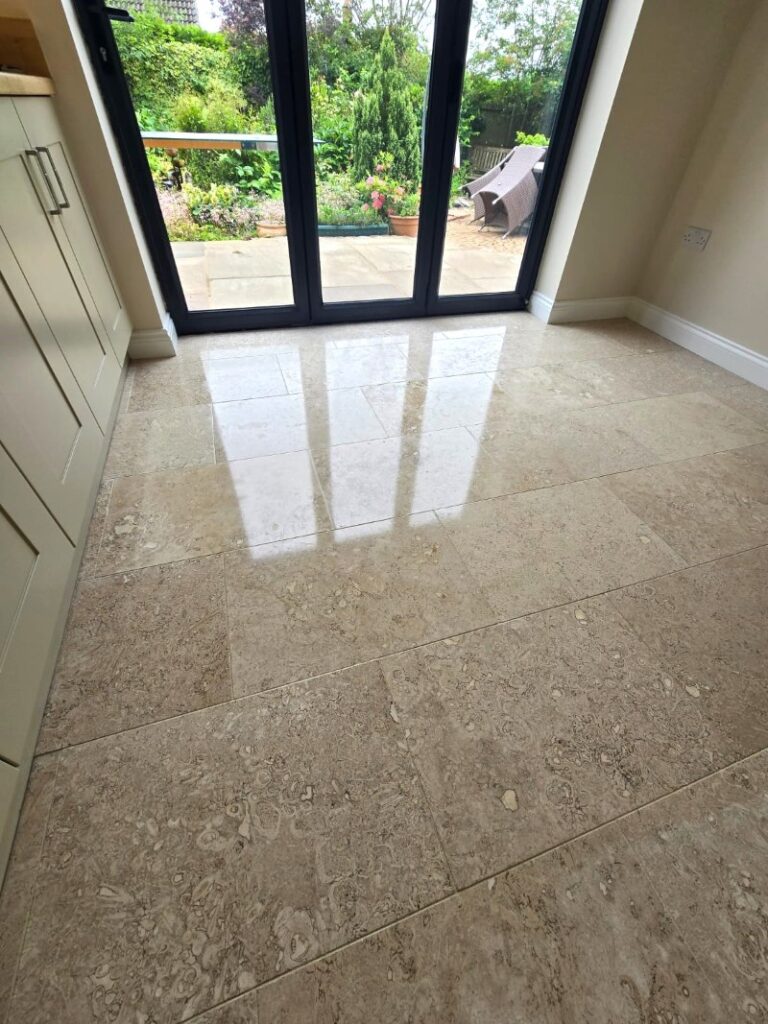
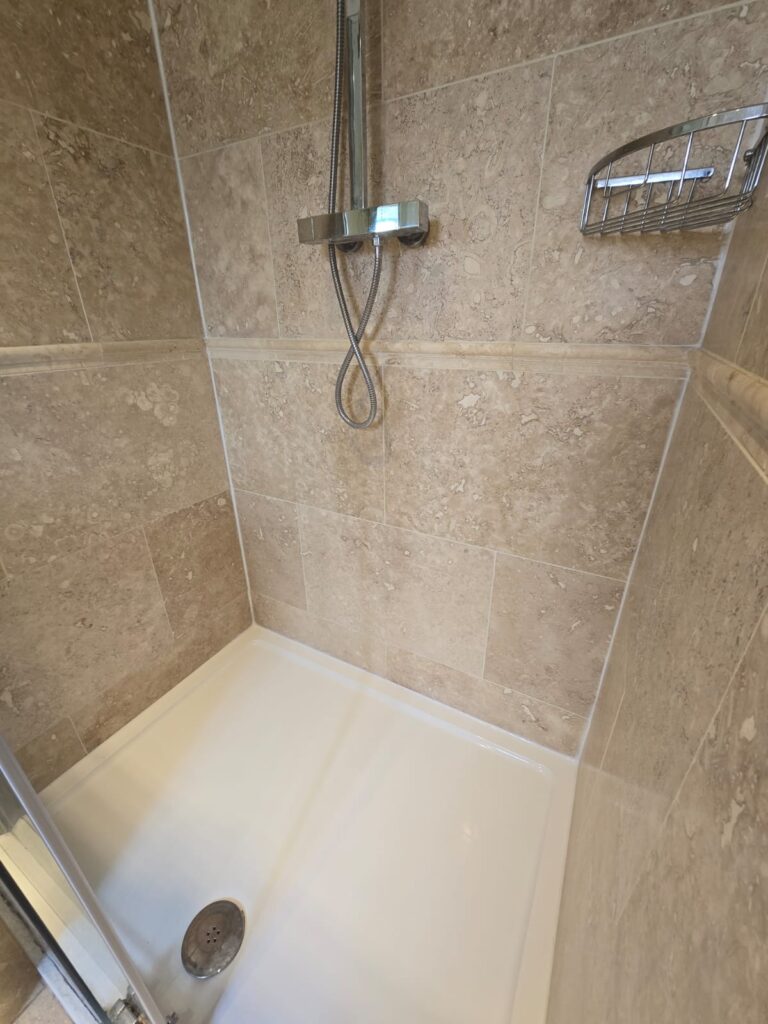
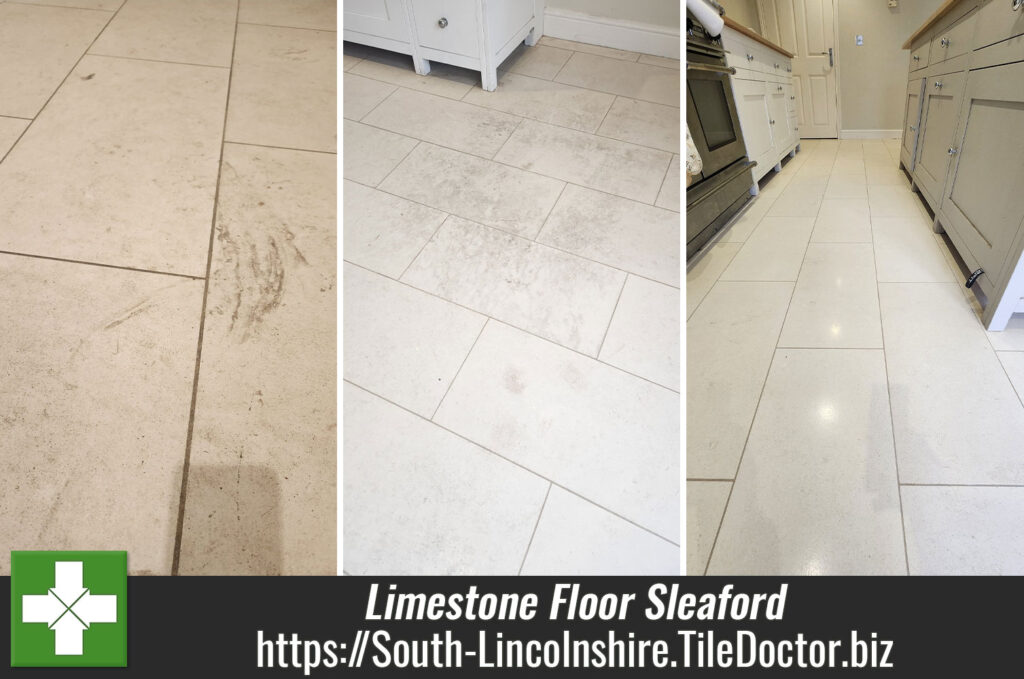
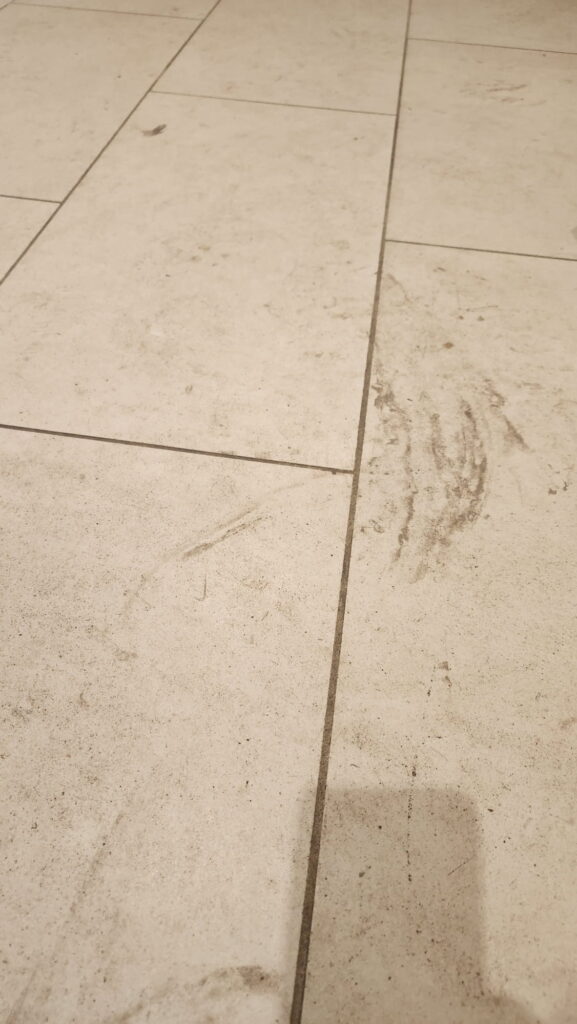
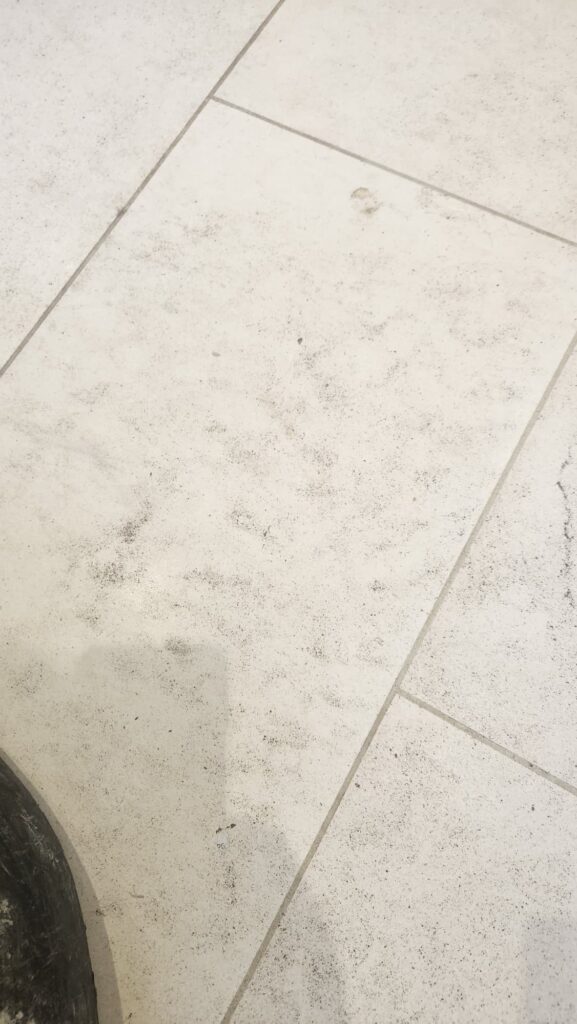
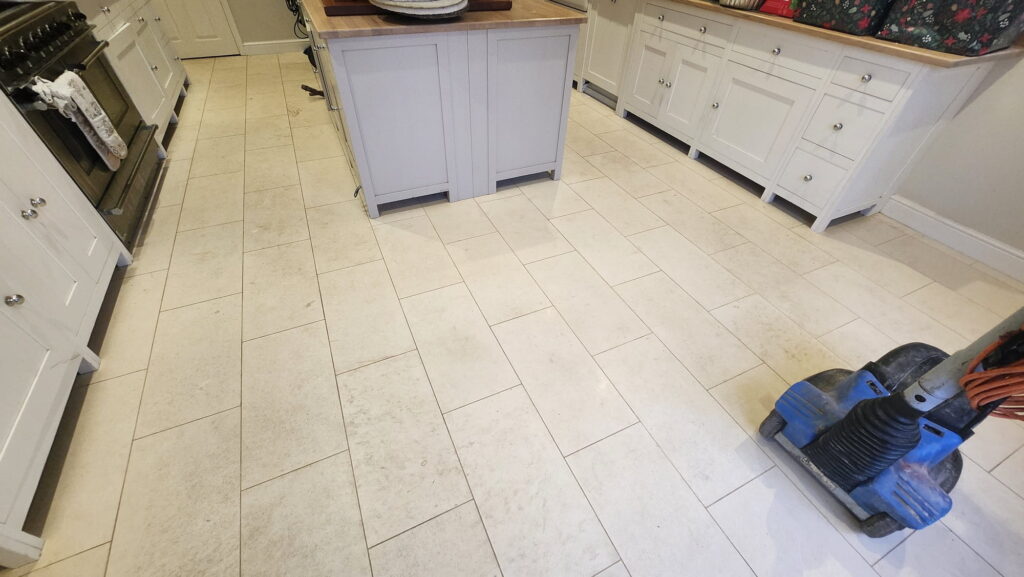
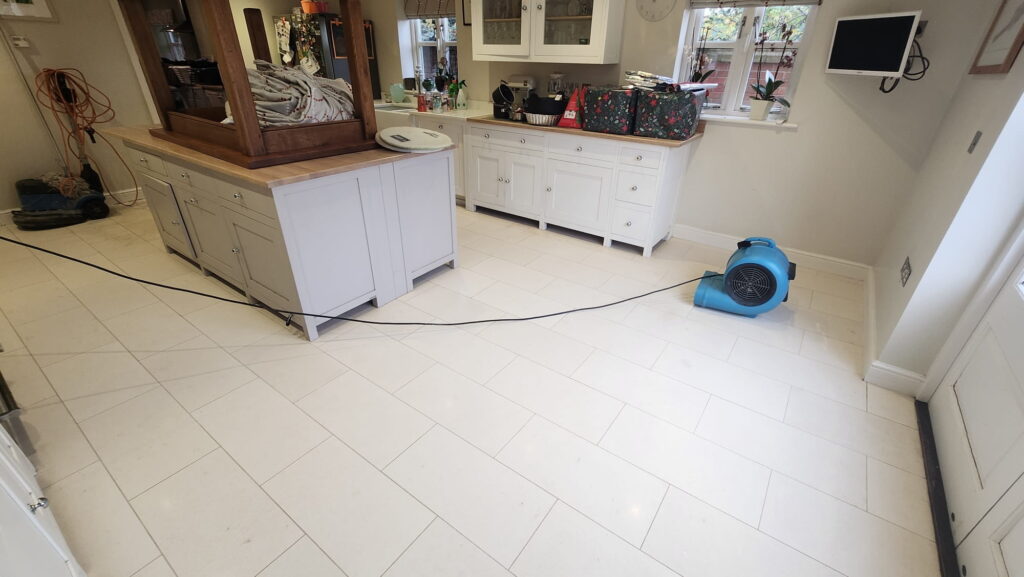
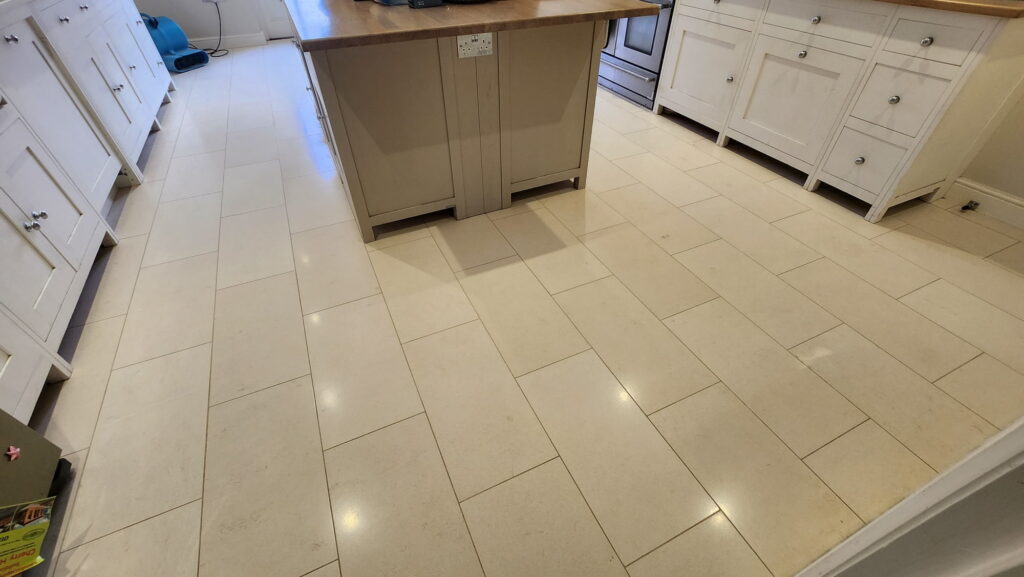
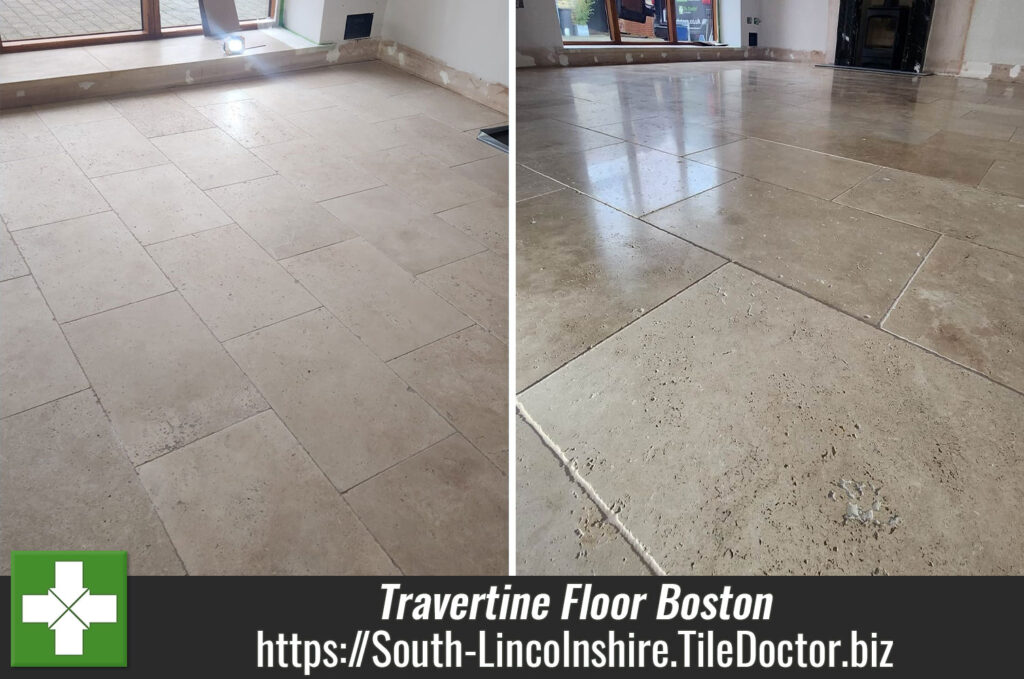
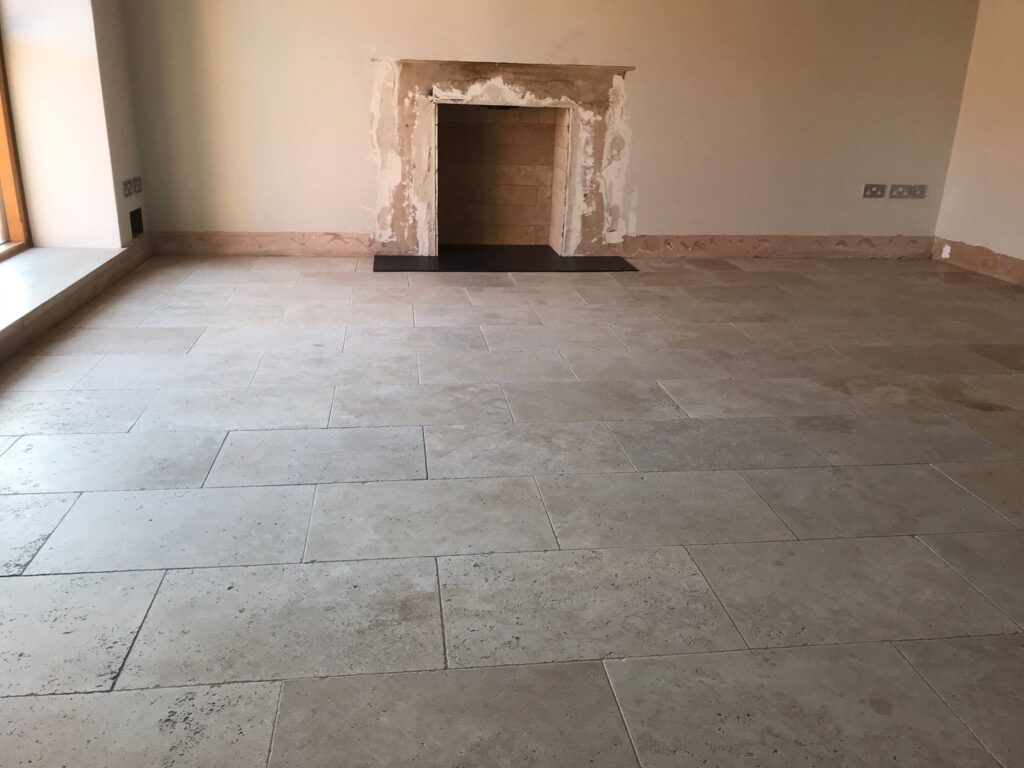
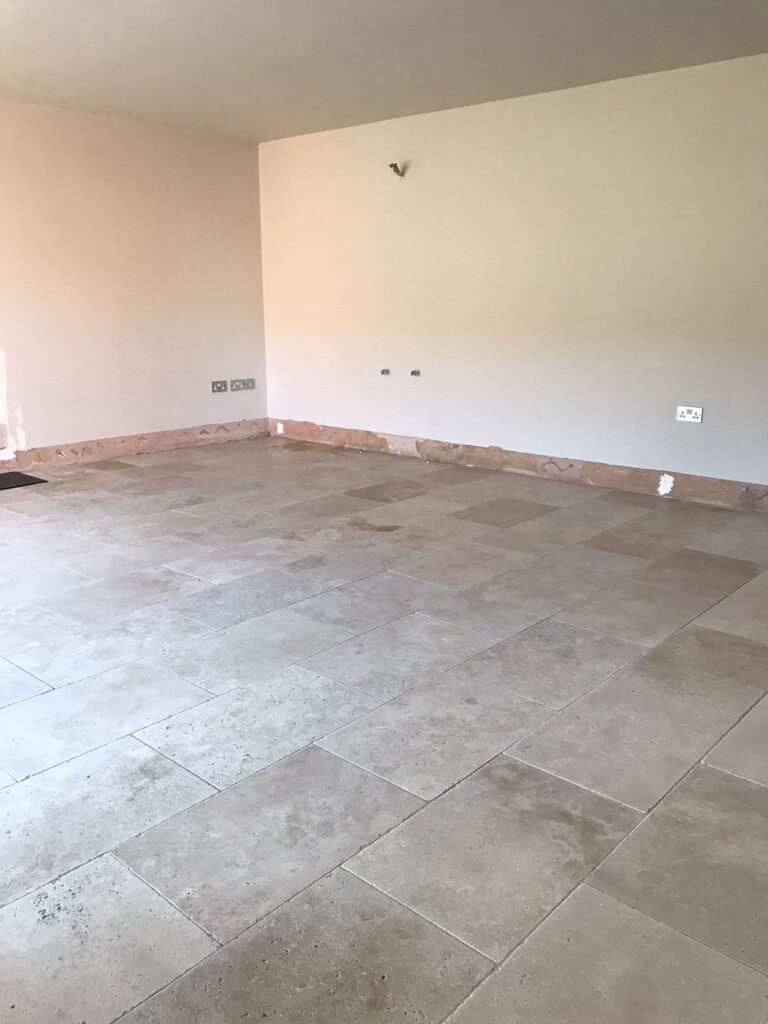

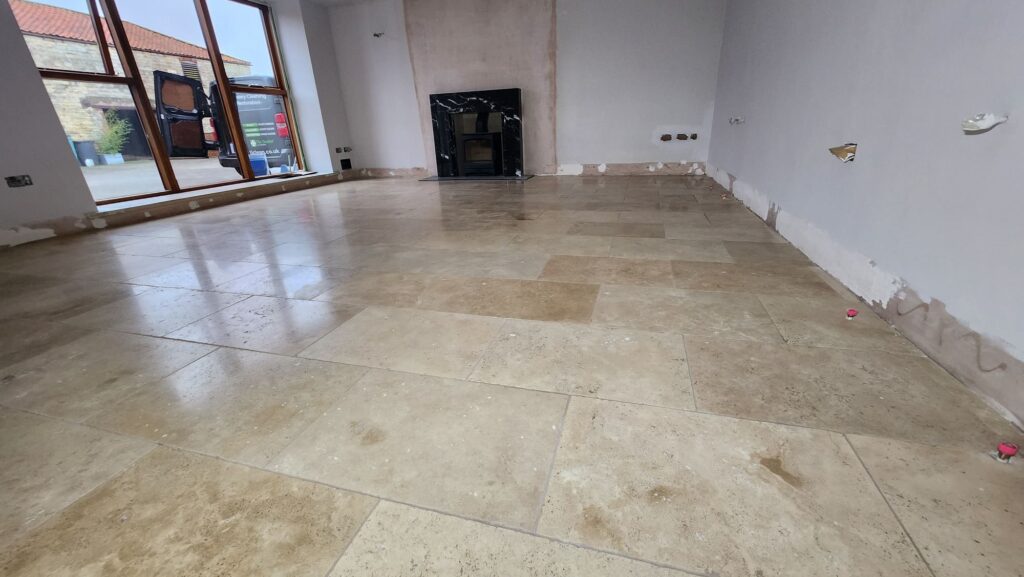
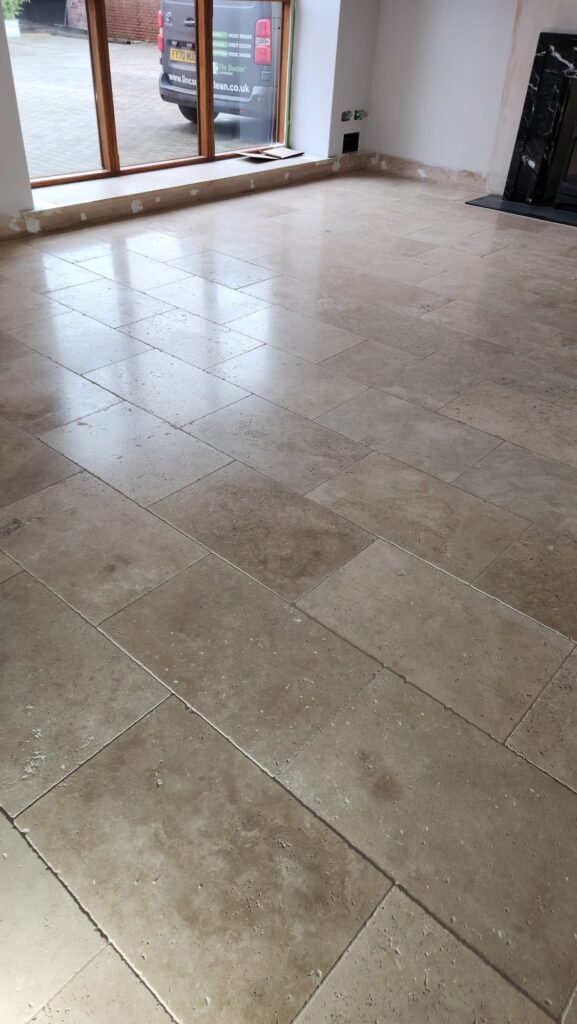
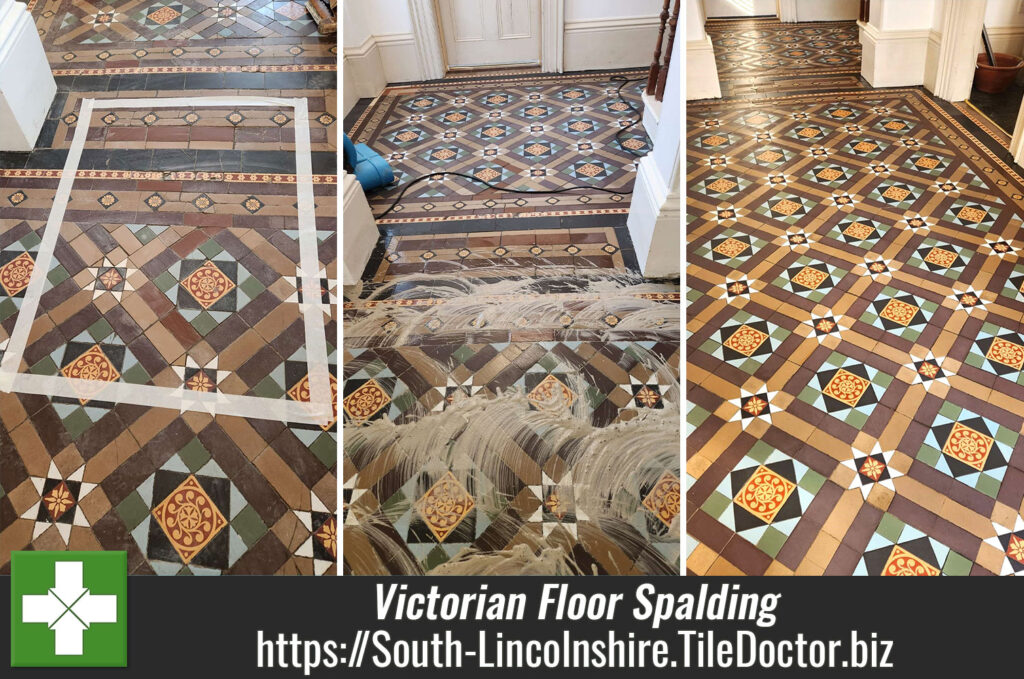
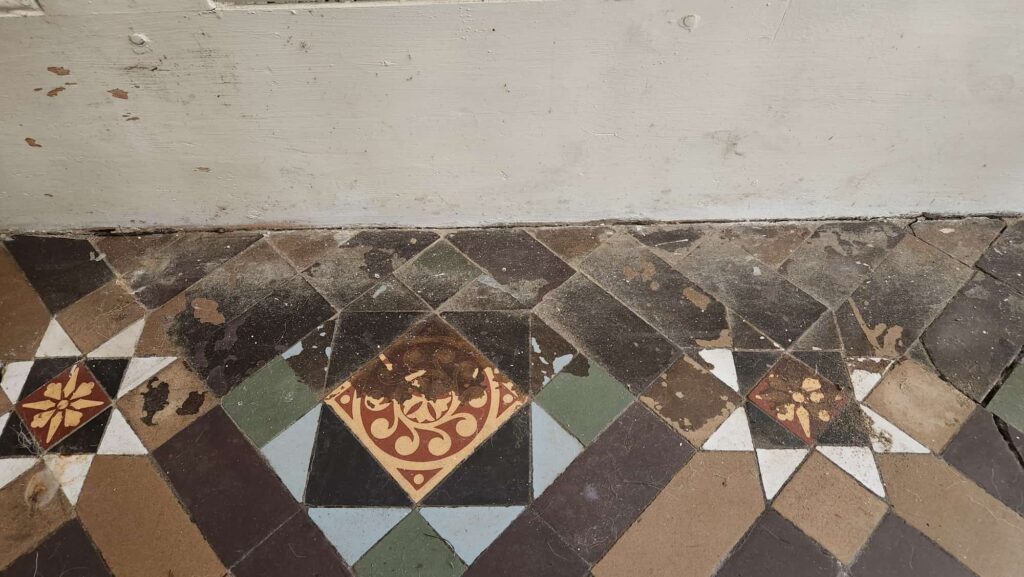
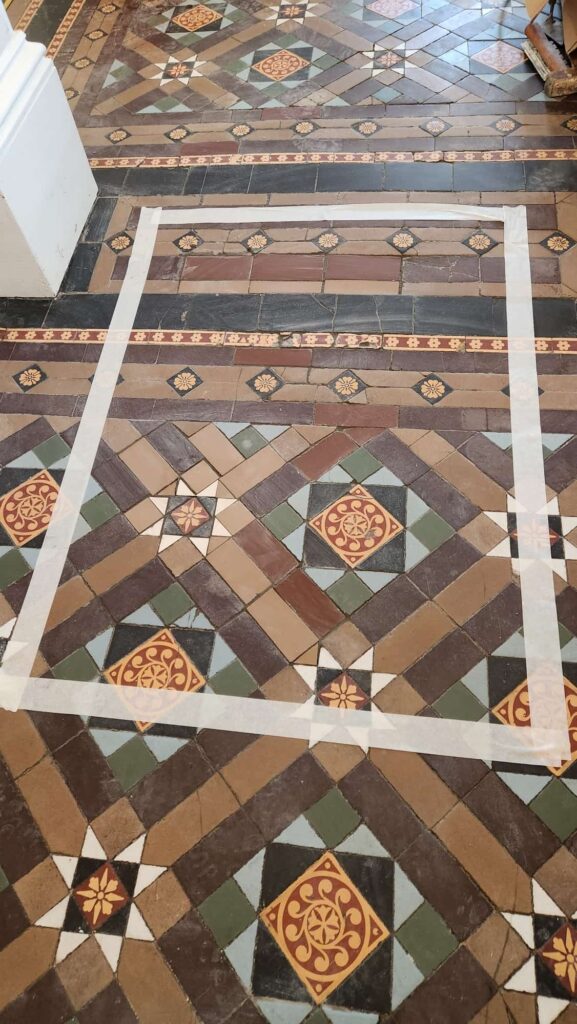
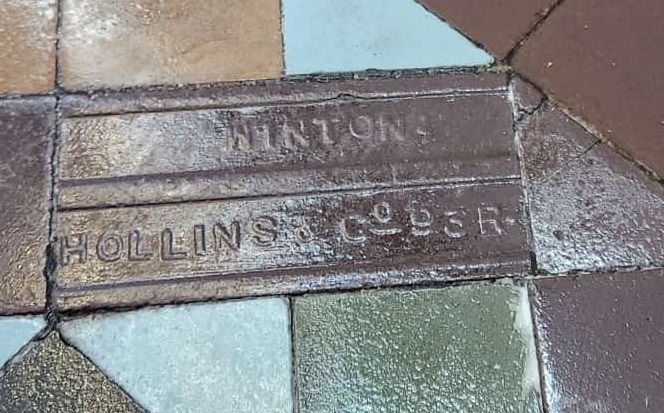
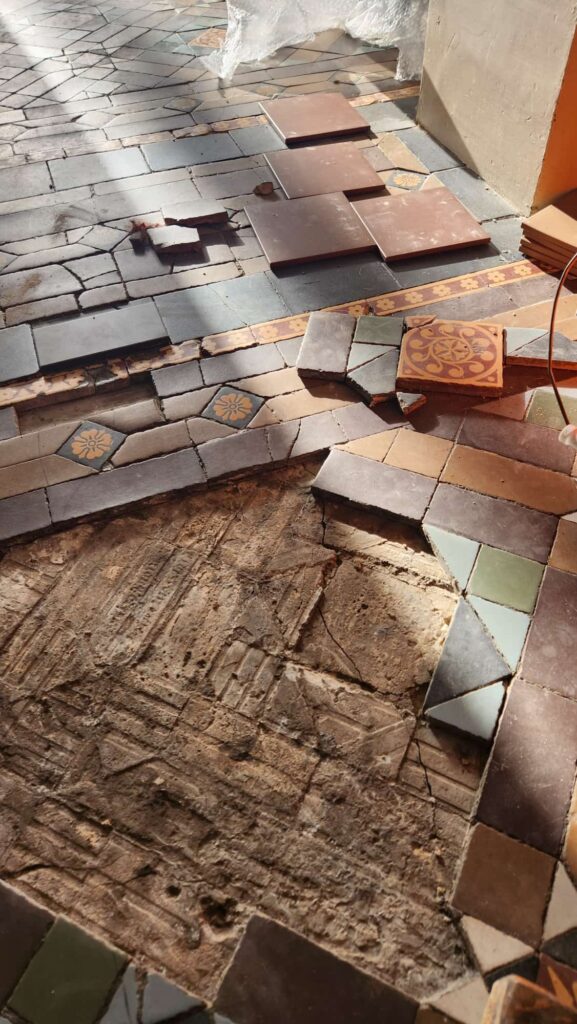
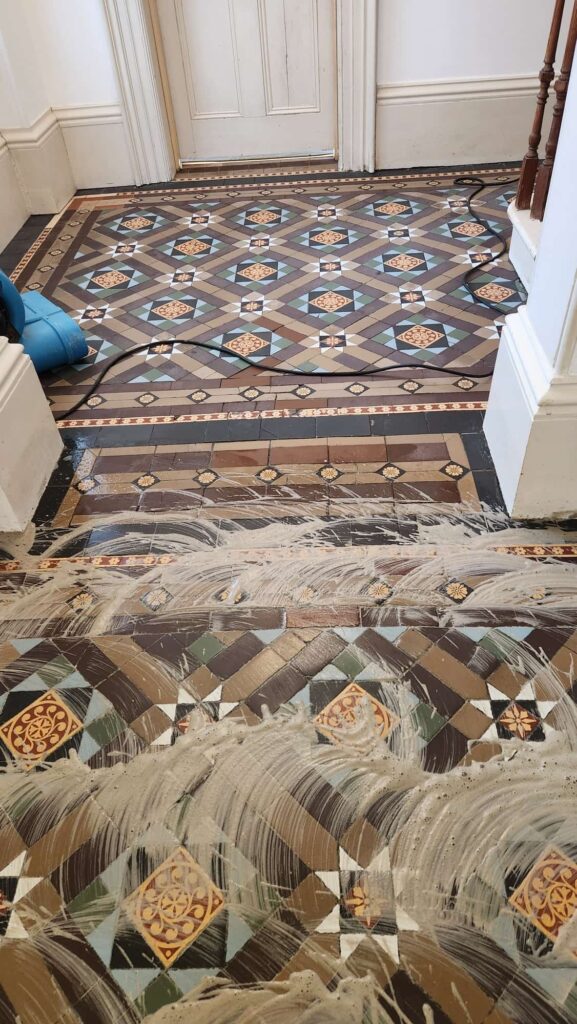

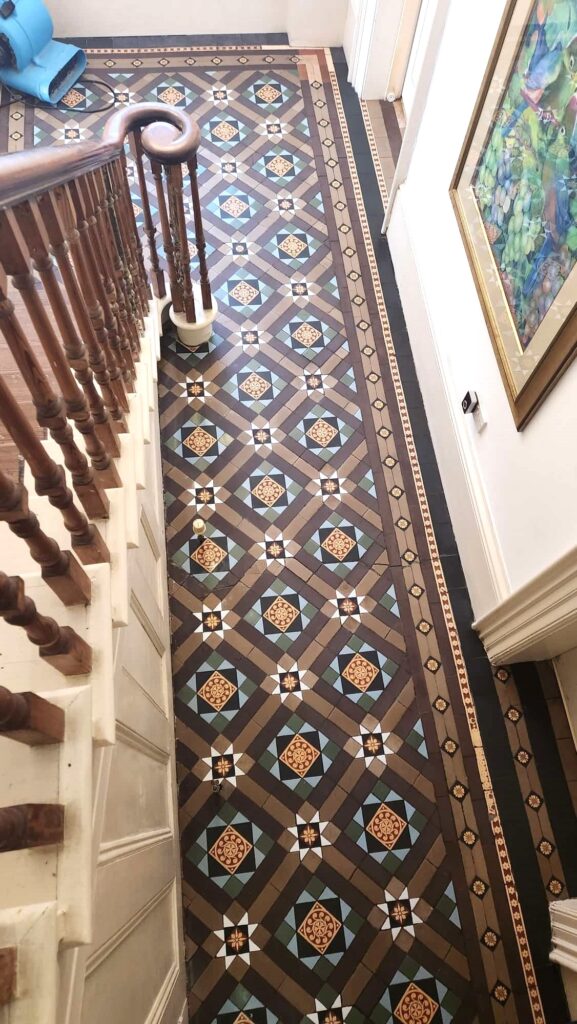
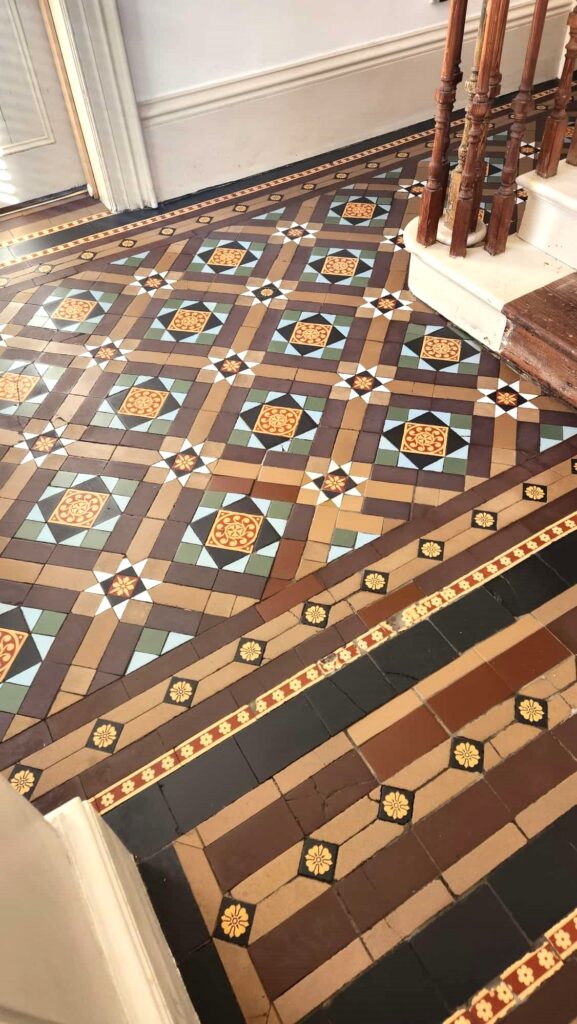
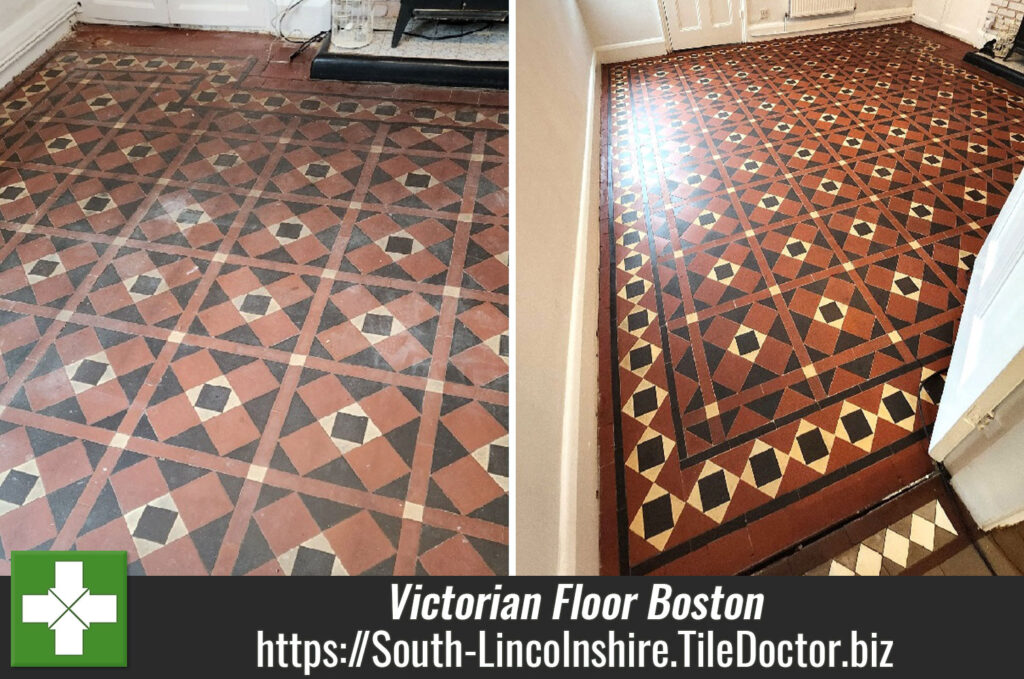
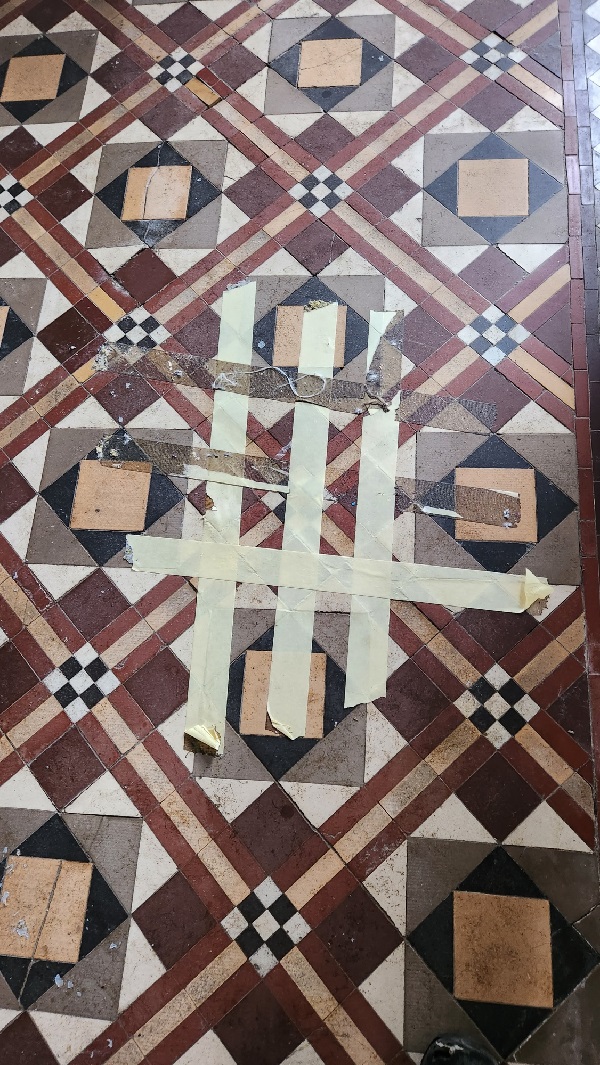
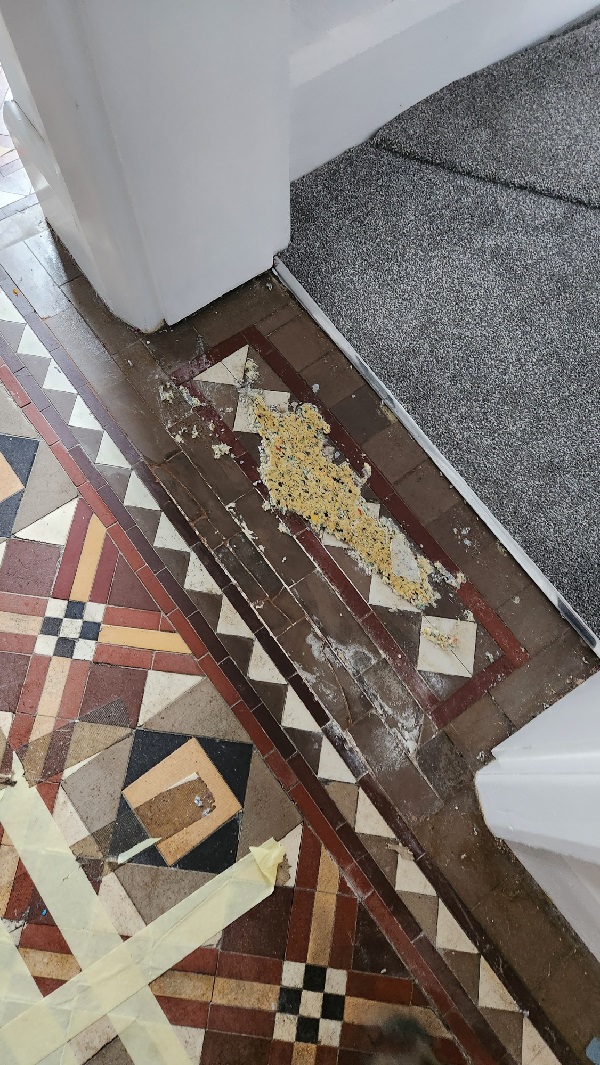

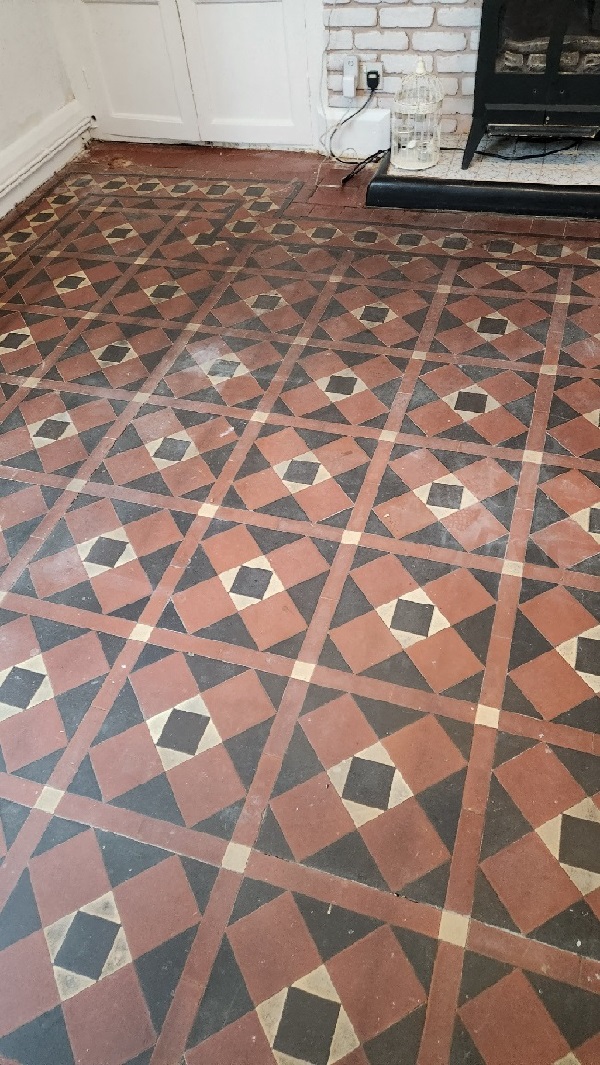
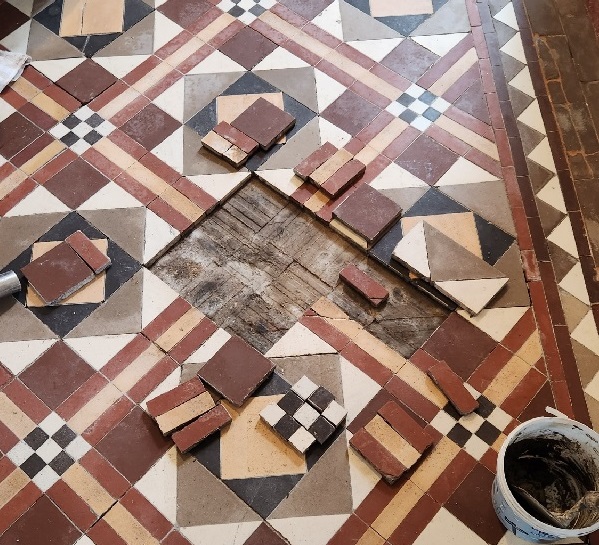
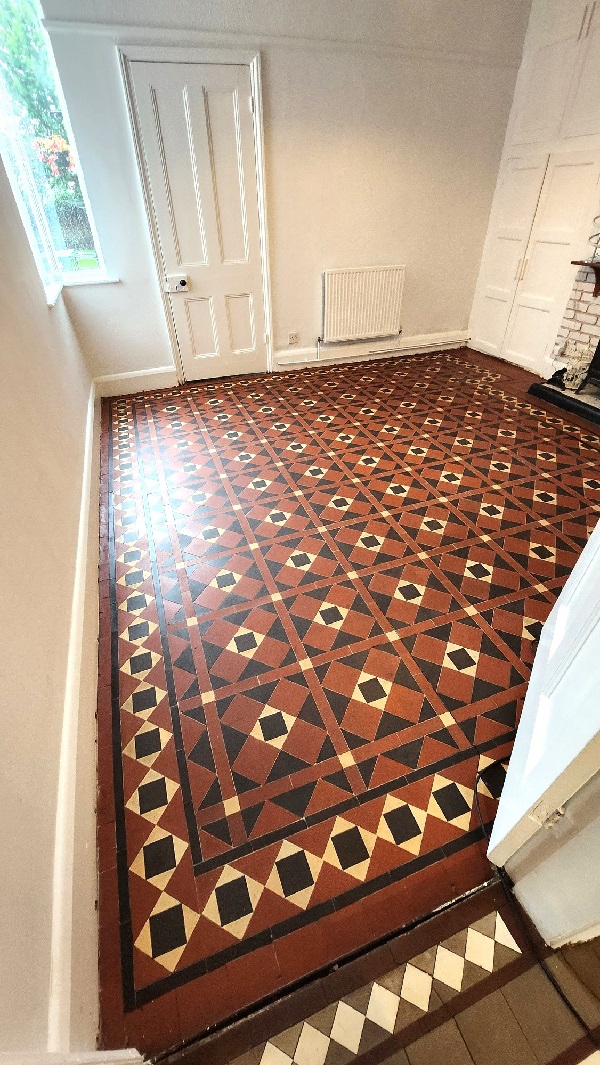
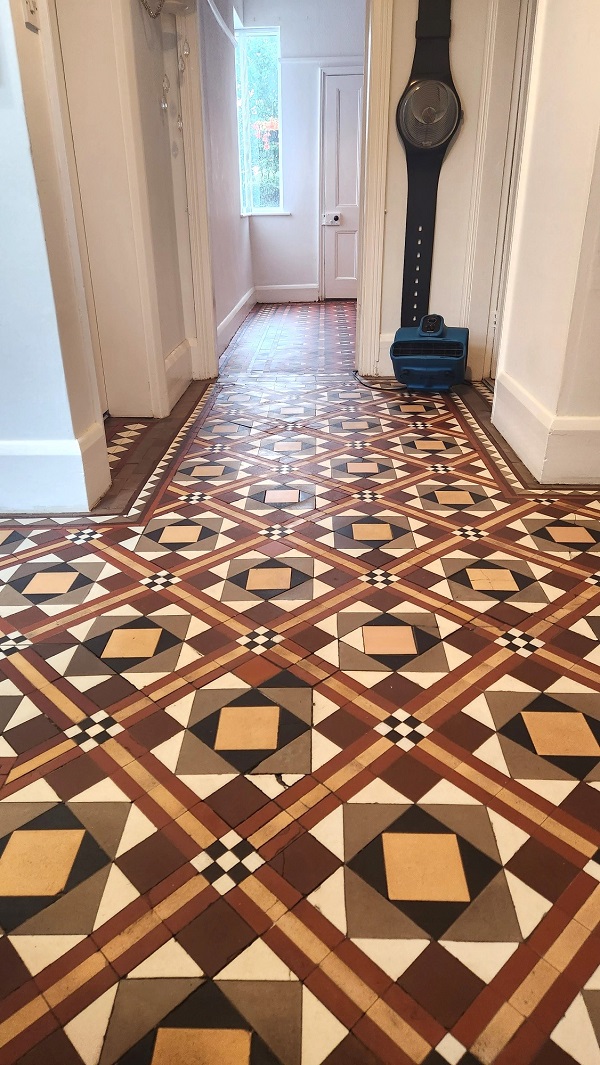
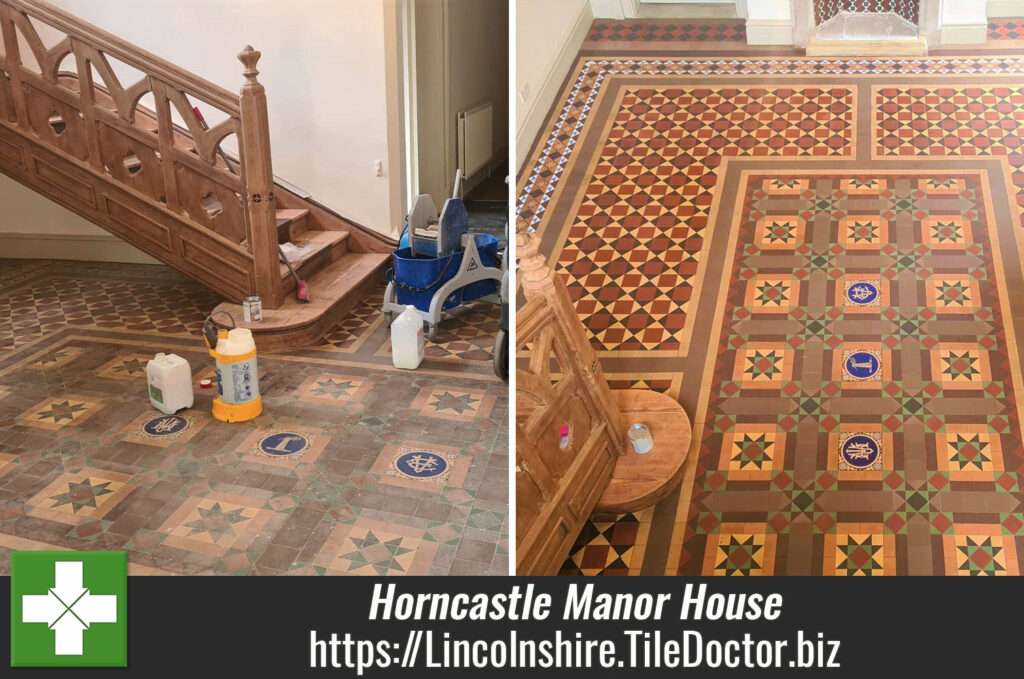



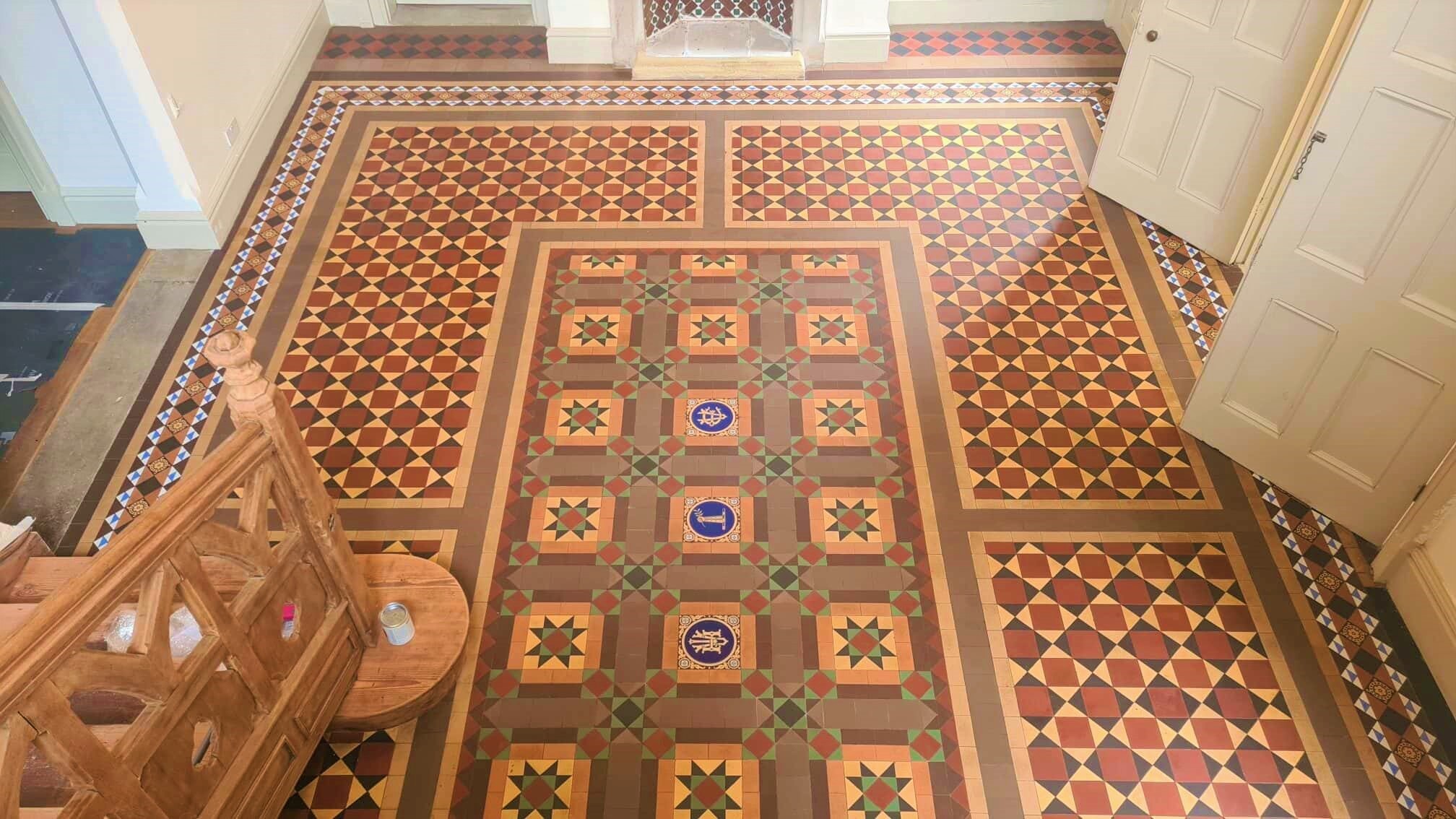

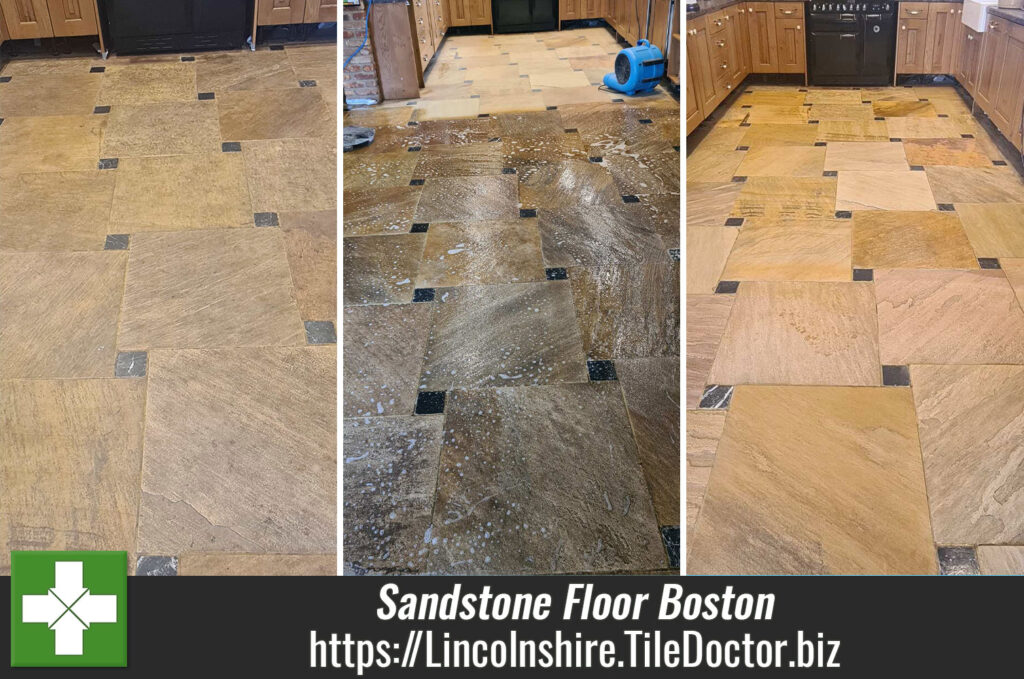





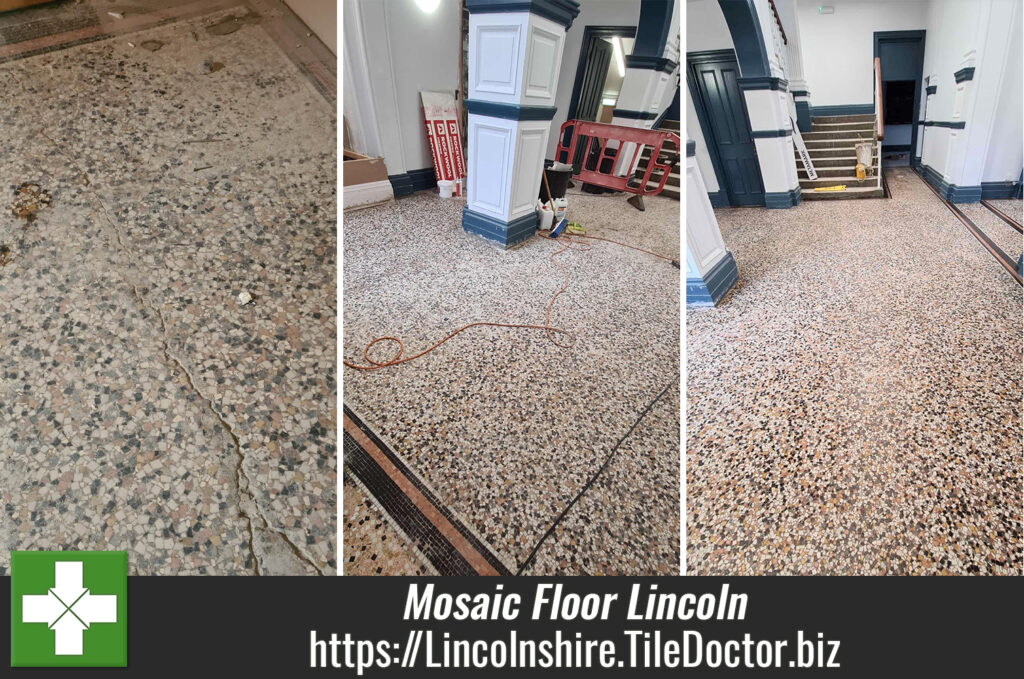



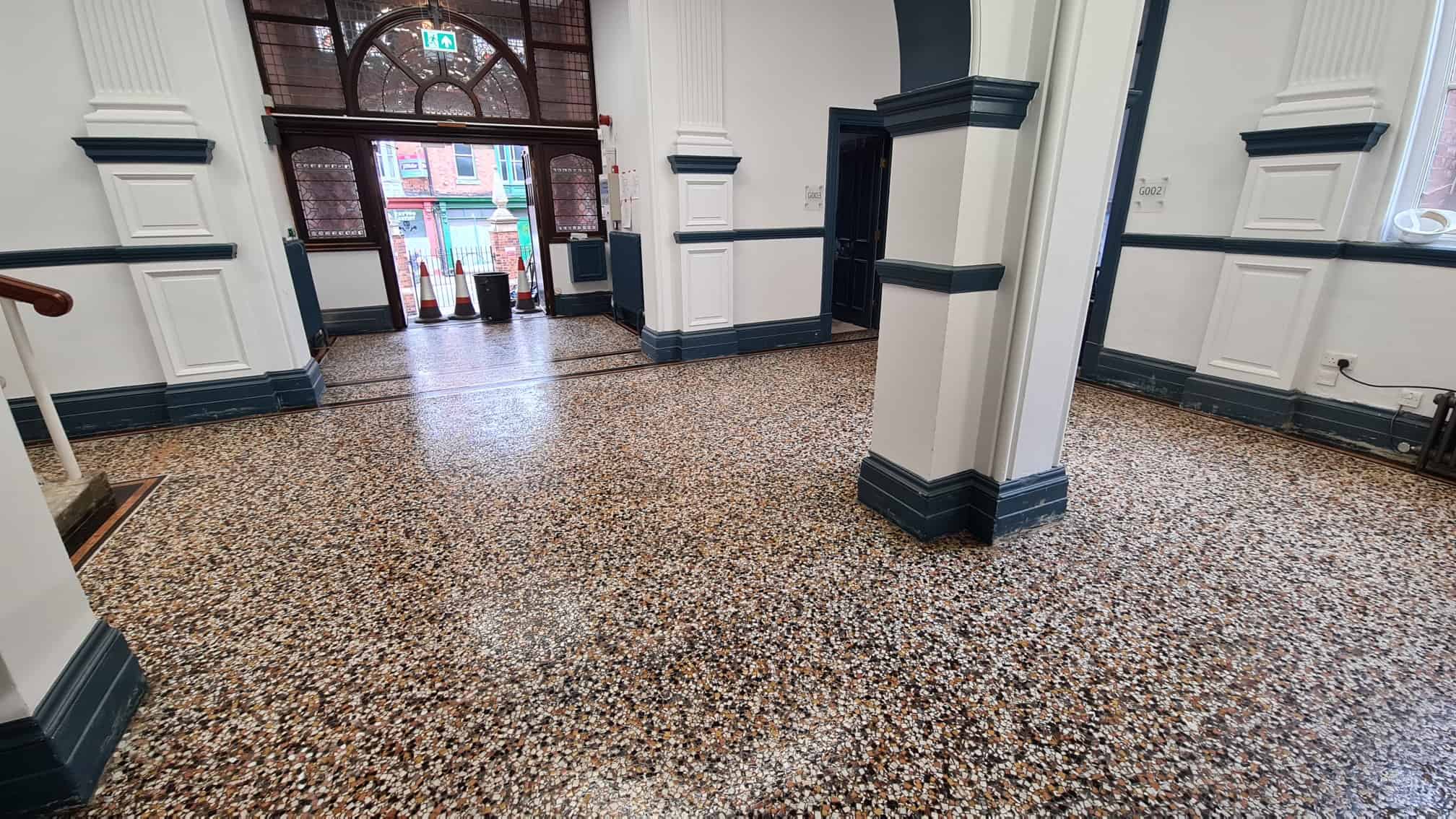

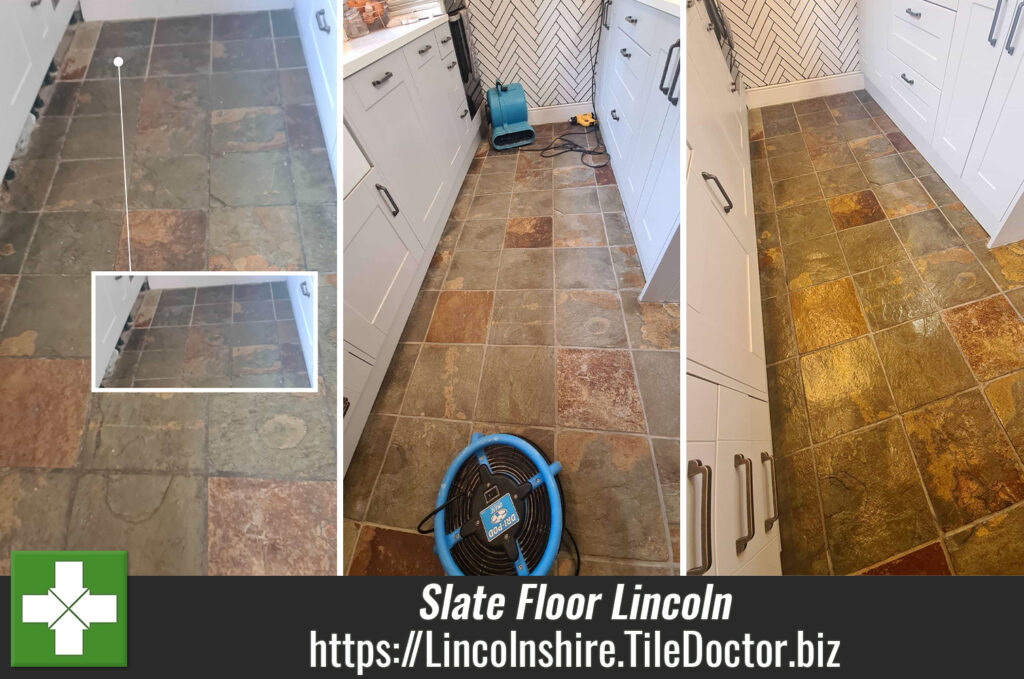




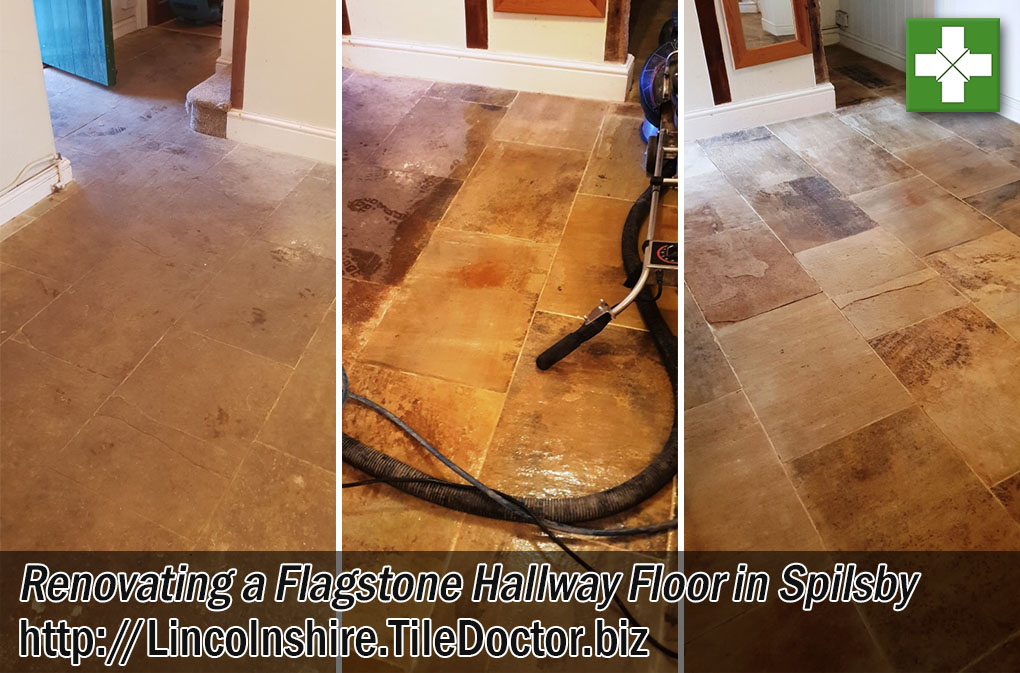





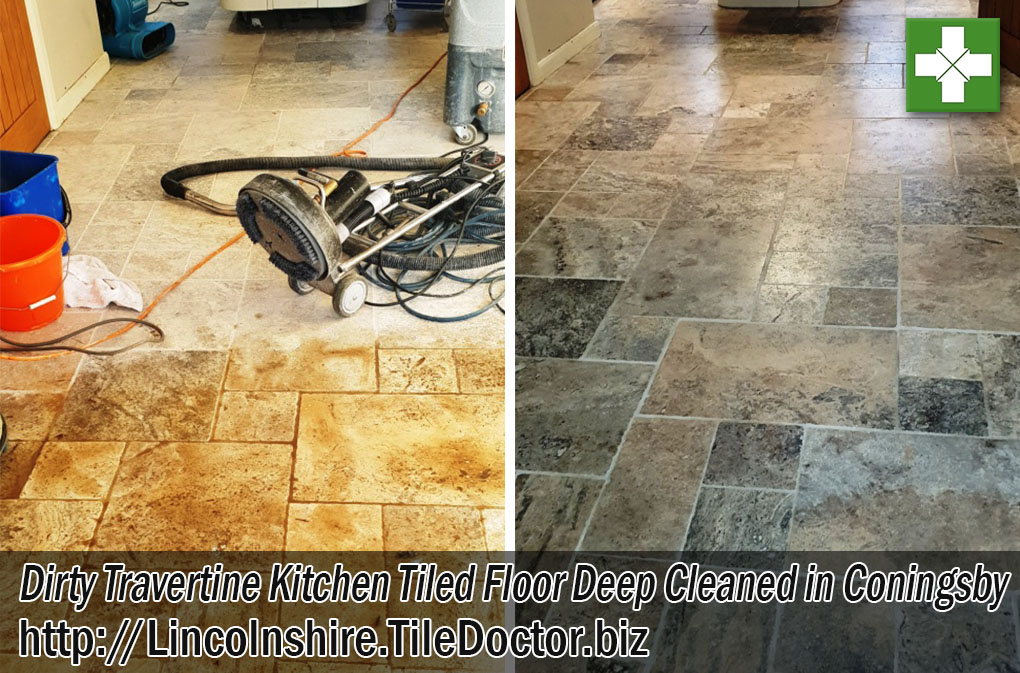





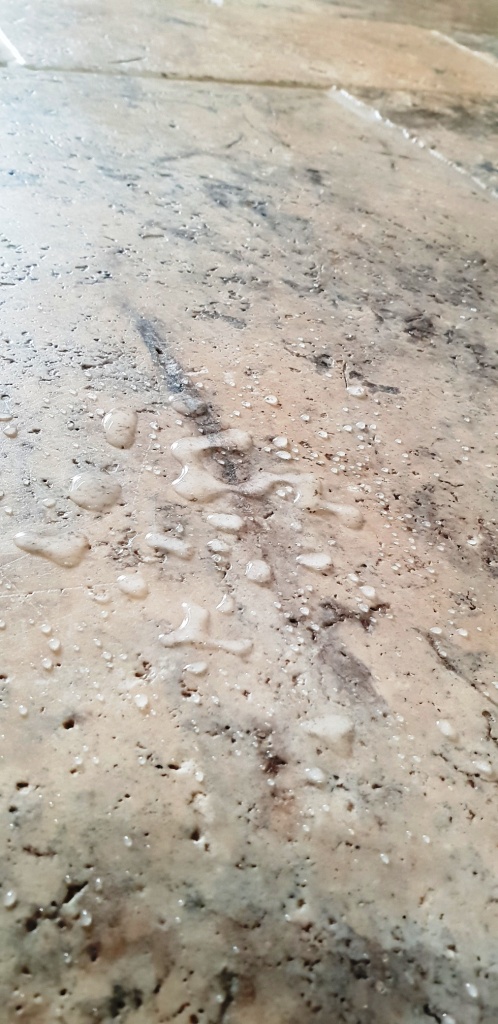


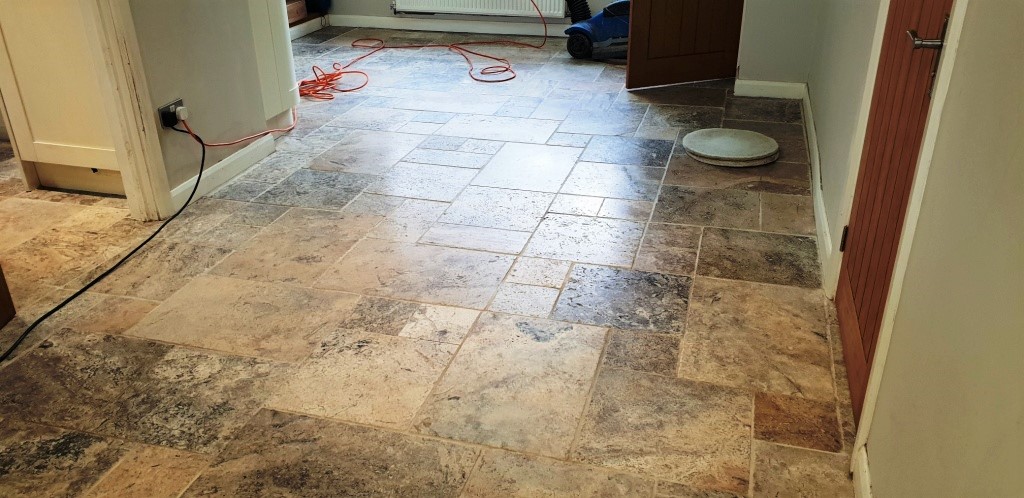
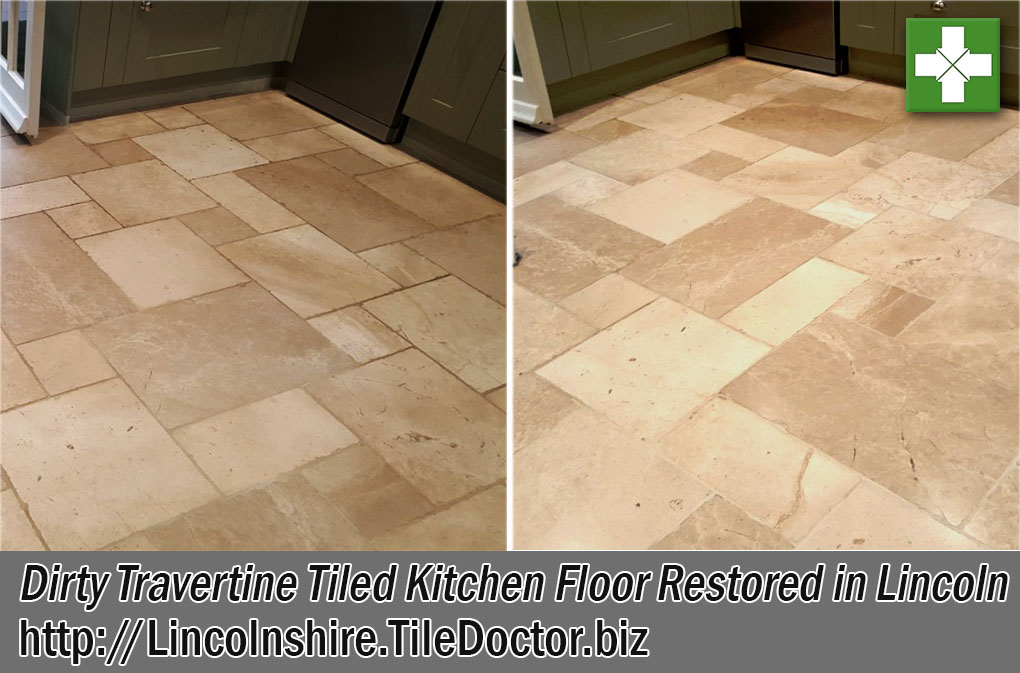
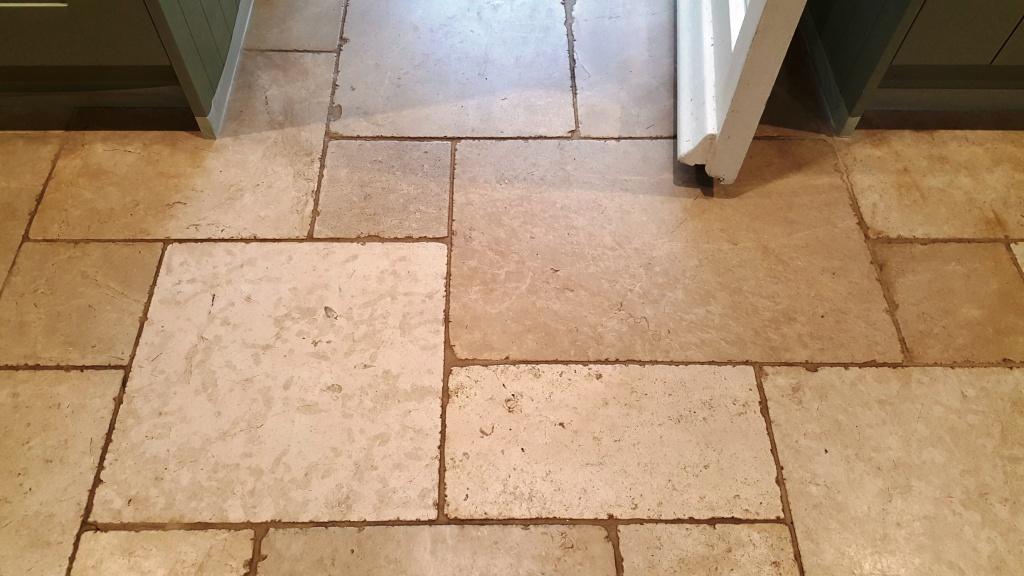
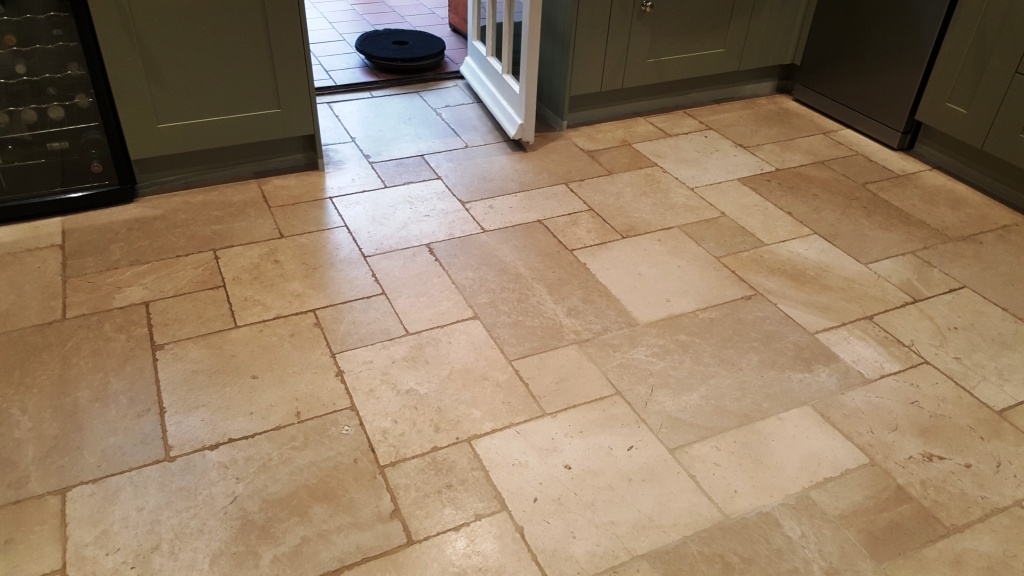 I also ran a stiff grout brush along the edges of the floor and especially along the grout lines to get the grout as clean as possible; the
I also ran a stiff grout brush along the edges of the floor and especially along the grout lines to get the grout as clean as possible; the 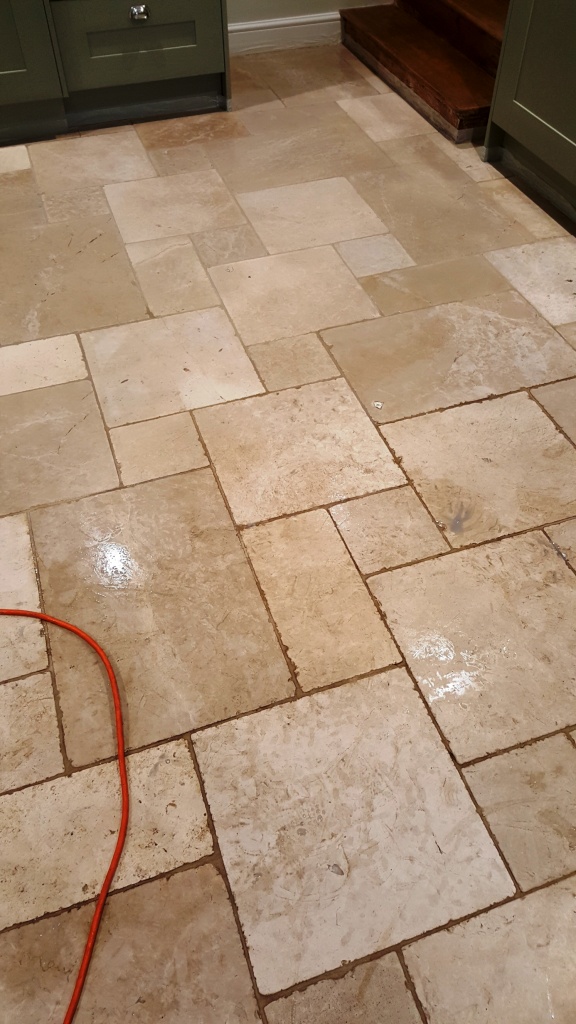 After the deep clean we filled the holes as required using flexible filler which gives a really smooth look to the flooring. We then left our turbo dryer system on overnight to thoroughly dry out the floor before returning to seal the tiles on day two.
After the deep clean we filled the holes as required using flexible filler which gives a really smooth look to the flooring. We then left our turbo dryer system on overnight to thoroughly dry out the floor before returning to seal the tiles on day two.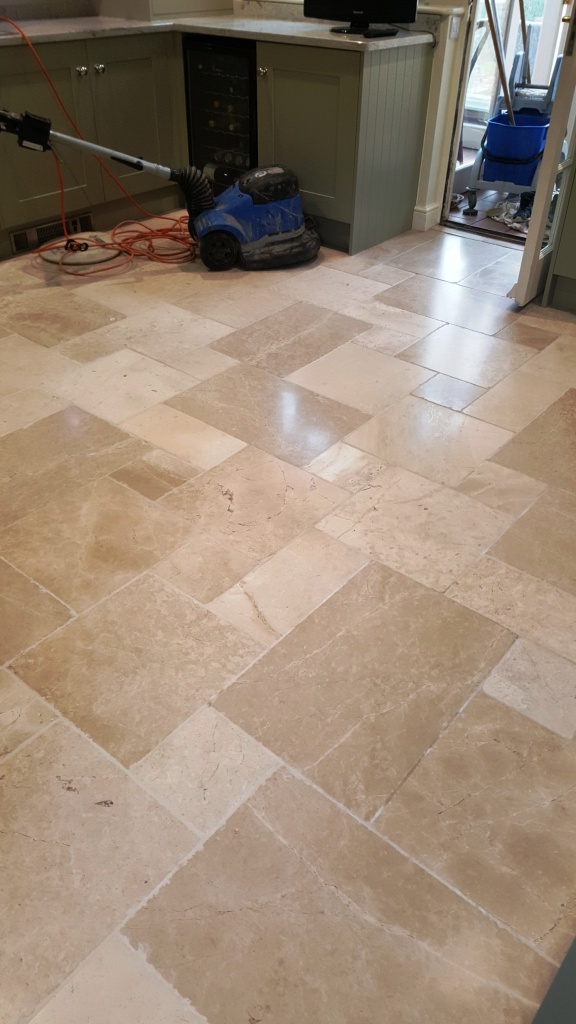 As you can see from the photographs, the combination of a deep clean, high quality polish and fresh seal really transformed the appearance of the floor from dull and lifeless to a really asset to the kitchen. The customer was so happy with the results she has booked us in to carry out the same work to other flooring in the property.
As you can see from the photographs, the combination of a deep clean, high quality polish and fresh seal really transformed the appearance of the floor from dull and lifeless to a really asset to the kitchen. The customer was so happy with the results she has booked us in to carry out the same work to other flooring in the property.
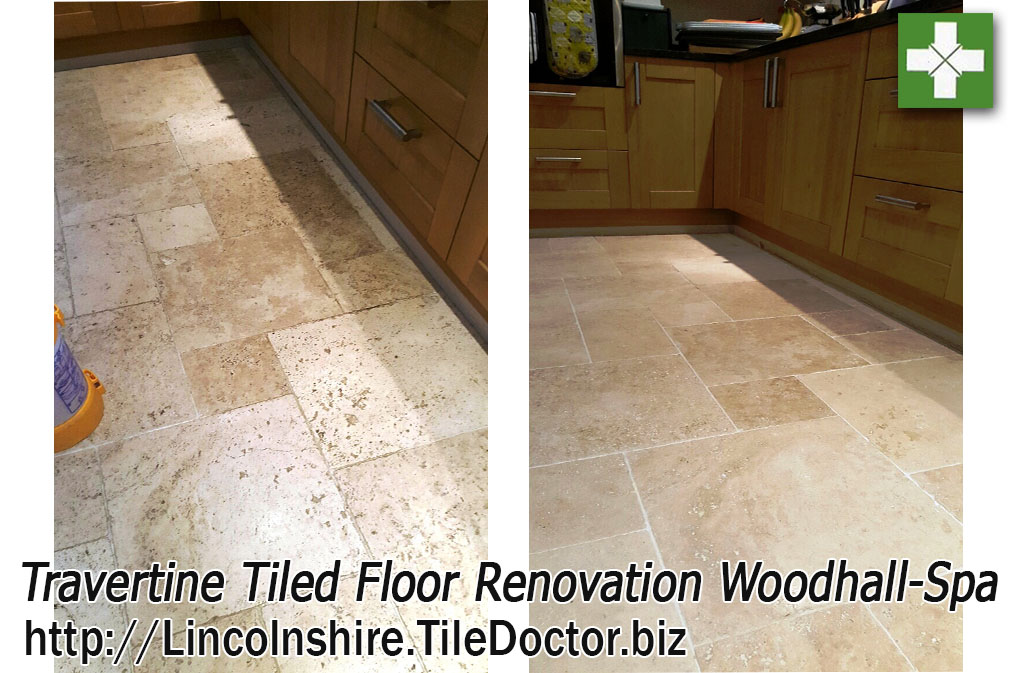

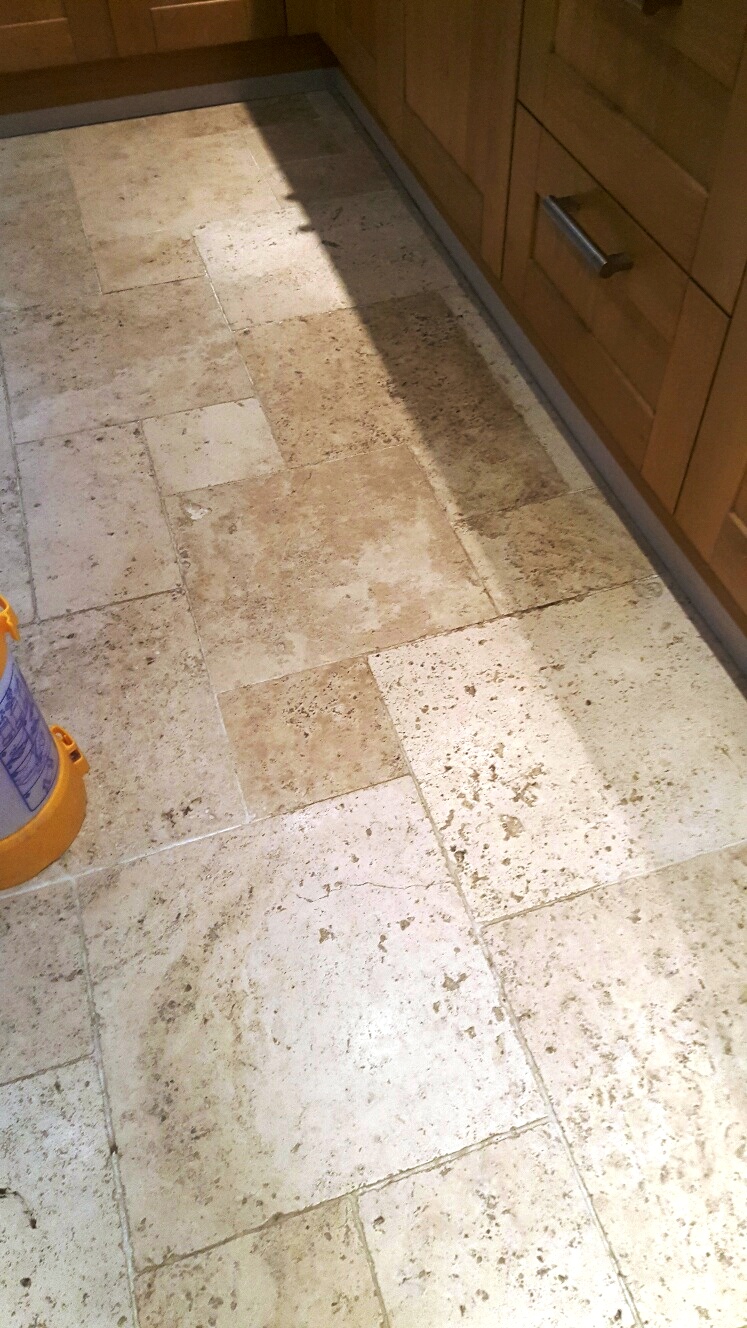

 Ensuring the floor is bone dry before sealing is important as I needed to seal the tiles the next day, and a small amount of excess moisture can cloud the sealer and damage its performance.
Ensuring the floor is bone dry before sealing is important as I needed to seal the tiles the next day, and a small amount of excess moisture can cloud the sealer and damage its performance.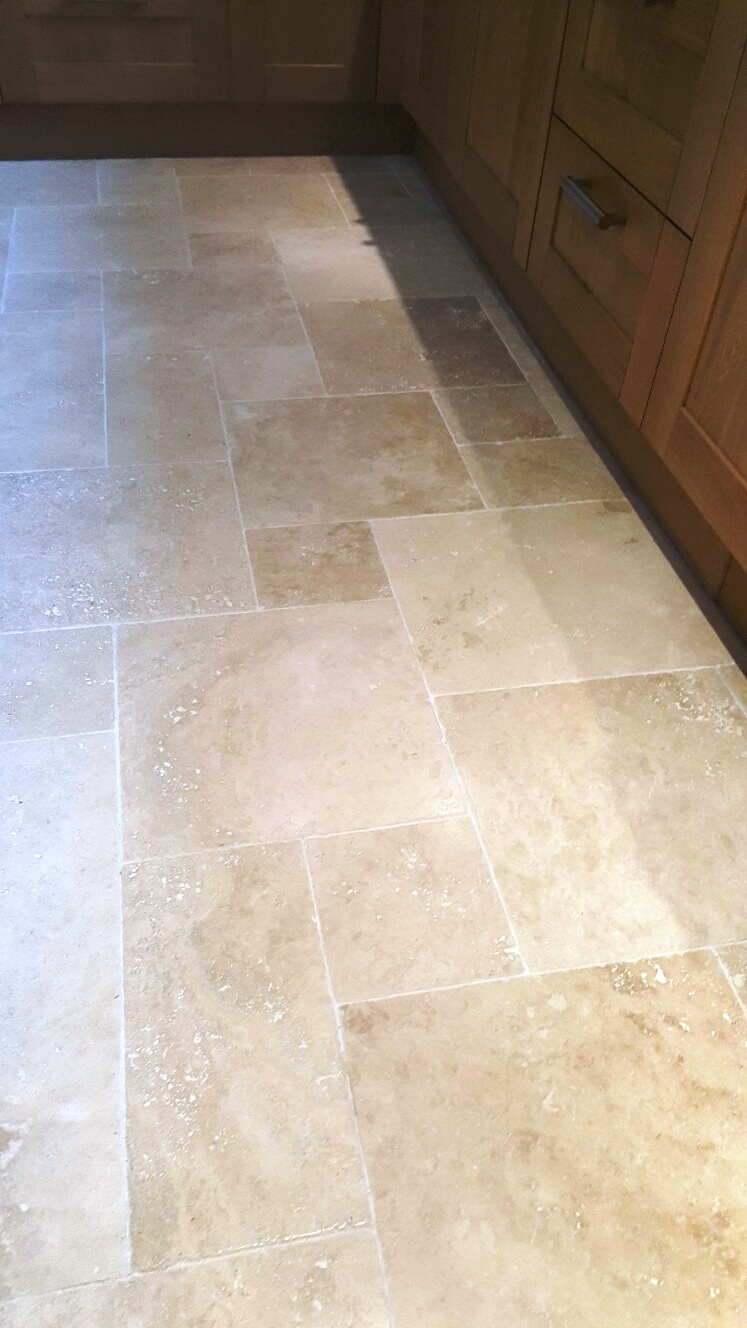 I think you will agree the floor now looks much better, certainly the customer was very happy with the work and left the following feedback:
I think you will agree the floor now looks much better, certainly the customer was very happy with the work and left the following feedback: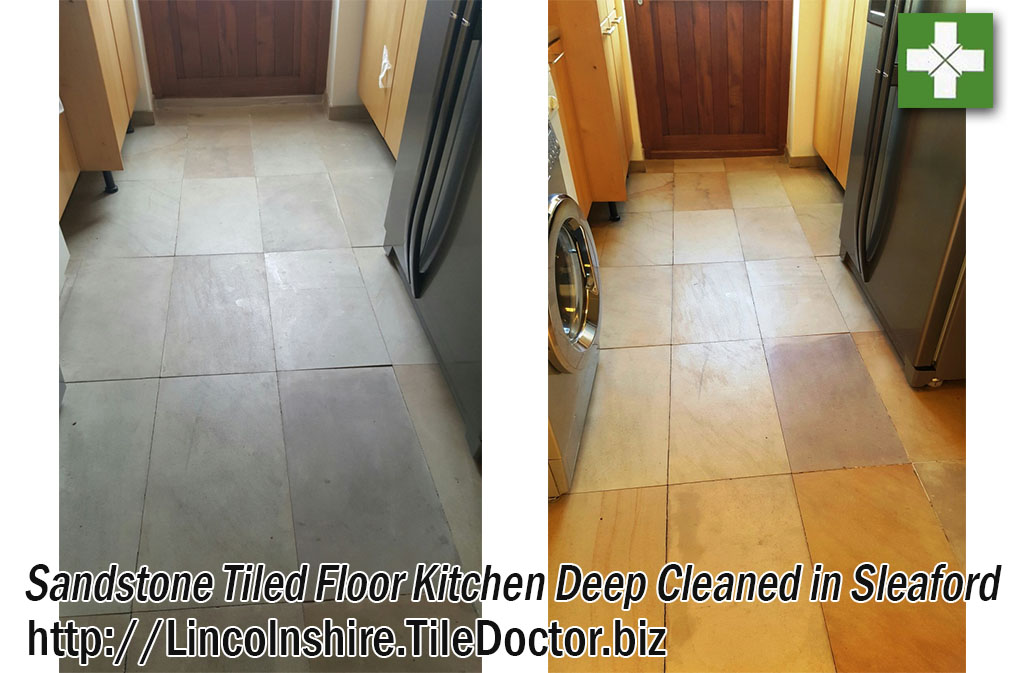





 After two coats of Colour Grow were applied, the transformation was well and truly complete. The customer was also well and truly happy. After eight years, the Sandstone tiles were restored to better than their original condition.
After two coats of Colour Grow were applied, the transformation was well and truly complete. The customer was also well and truly happy. After eight years, the Sandstone tiles were restored to better than their original condition. One question I often get asked is how do you know when your sealer has worn down. The answer is to conduct a water test on your tiles, if the water forms a bubble on the surface of the tile as in the photo below then it shows the sealer is doing its job.
One question I often get asked is how do you know when your sealer has worn down. The answer is to conduct a water test on your tiles, if the water forms a bubble on the surface of the tile as in the photo below then it shows the sealer is doing its job.
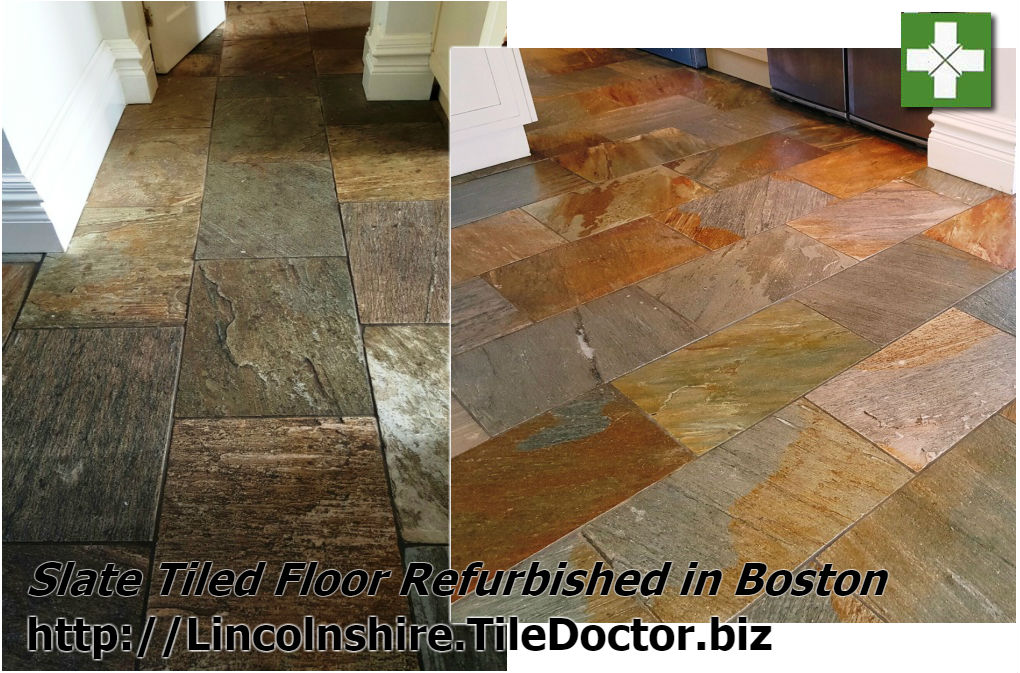
 The property owner couldn’t figure out the best way to improve the situation and so called me in to see what could be done. Upon inspecting the tiles first hand I decided that the best course of action would be a very deep clean and the application of a fresh sealant to offer long-term protection against ingrained dirt.
The property owner couldn’t figure out the best way to improve the situation and so called me in to see what could be done. Upon inspecting the tiles first hand I decided that the best course of action would be a very deep clean and the application of a fresh sealant to offer long-term protection against ingrained dirt.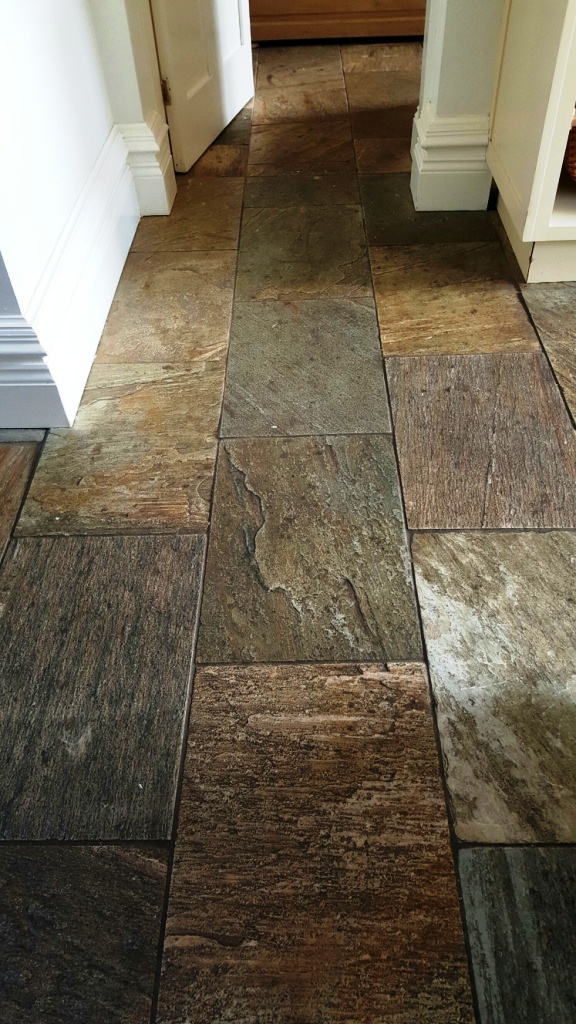
 Satisfied that the floor had been cleaned as throughly as possible, I then installed several turbo dryers to thoroughly dry the flooring, allowing it to be ready for sealing the next day. Efficient drying was especially important here due to the amount of water used in the cleaning process; many tiled floor owners will already know that sealant cannot be applied if any moisture remains.
Satisfied that the floor had been cleaned as throughly as possible, I then installed several turbo dryers to thoroughly dry the flooring, allowing it to be ready for sealing the next day. Efficient drying was especially important here due to the amount of water used in the cleaning process; many tiled floor owners will already know that sealant cannot be applied if any moisture remains.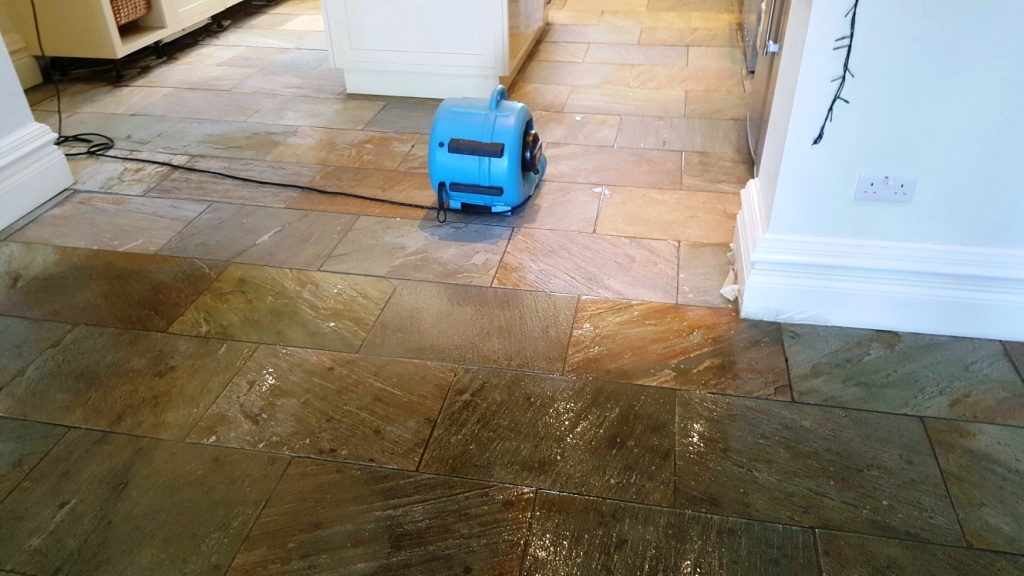
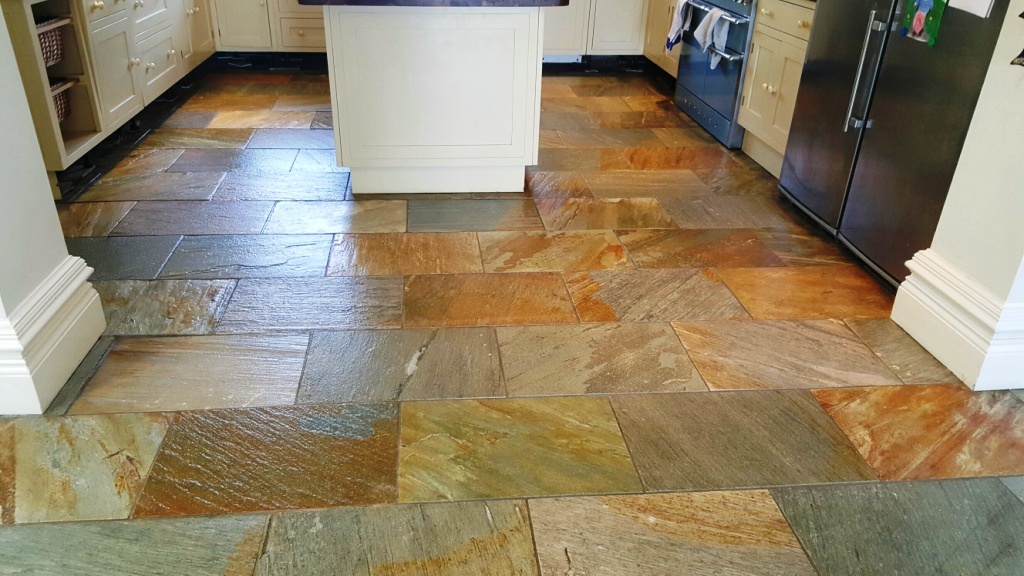 Looking at the photos of the floor before and after my work you can really get an idea of the transformation achieved in a short space of time. What a difference! The property owners were very pleased with the results, especially now that they are aware of the best way to keep their lovely Riven Slate tiles clean and protected.
Looking at the photos of the floor before and after my work you can really get an idea of the transformation achieved in a short space of time. What a difference! The property owners were very pleased with the results, especially now that they are aware of the best way to keep their lovely Riven Slate tiles clean and protected.
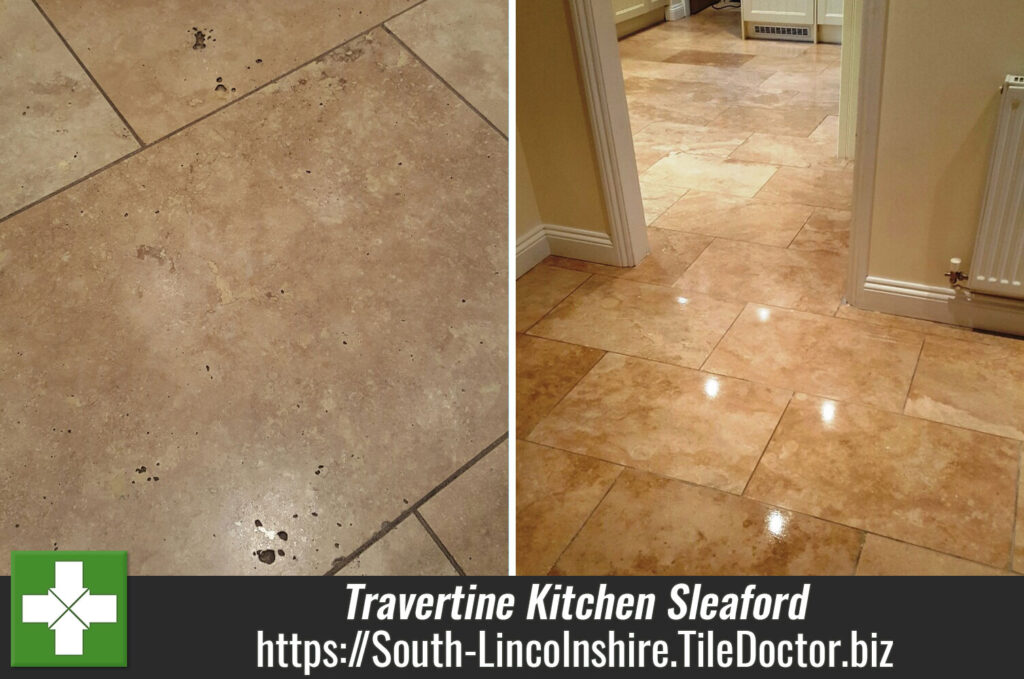

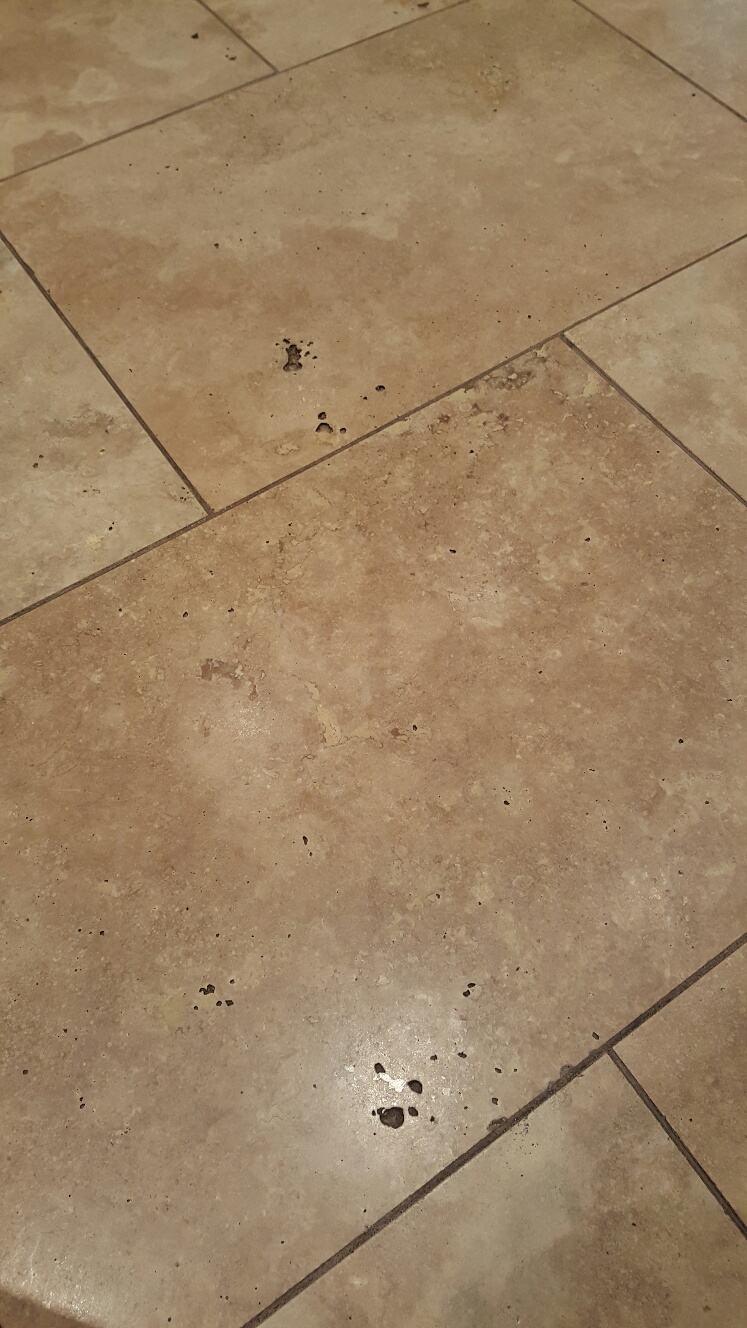
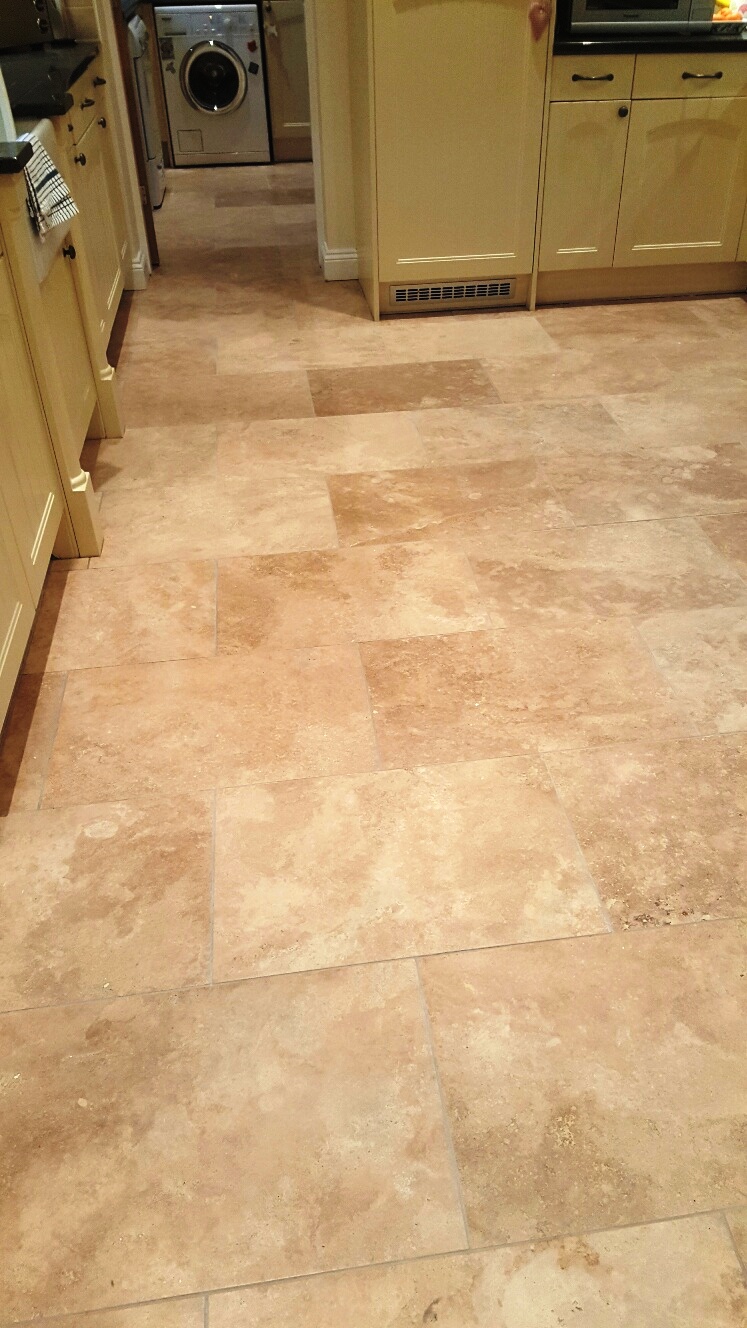 To round off the first day of the restoration, I used a flexible matching filler to fill up any pitted holes present on the surface of the tiles. Following this, I installed a turbo dryer to make sure the floor would dry fully overnight, and be ready to seal the following day.
To round off the first day of the restoration, I used a flexible matching filler to fill up any pitted holes present on the surface of the tiles. Following this, I installed a turbo dryer to make sure the floor would dry fully overnight, and be ready to seal the following day.

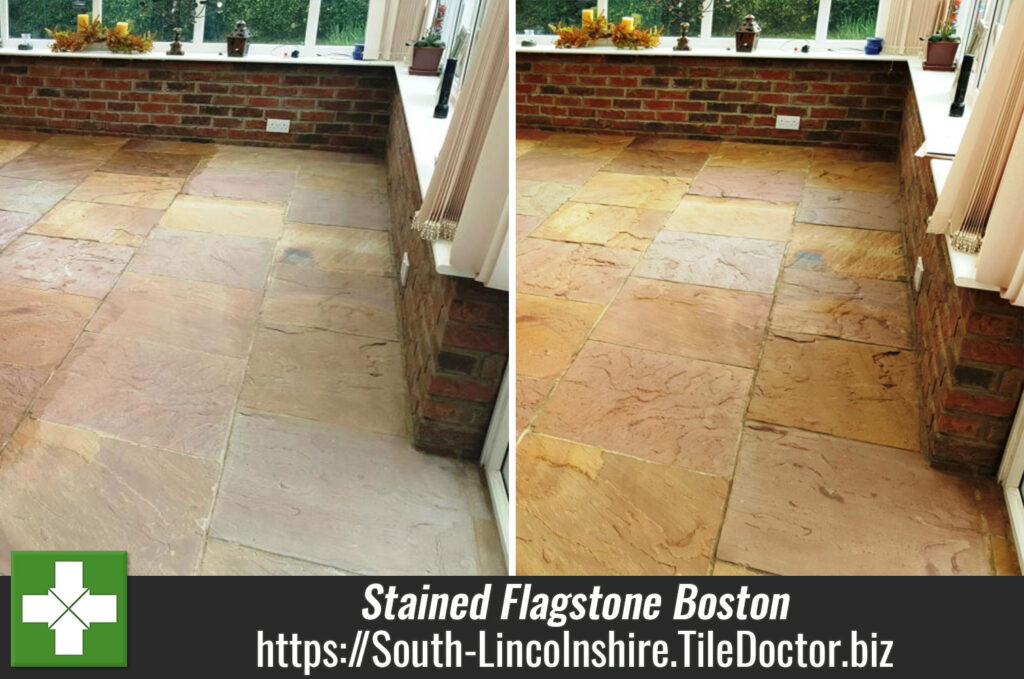


 My choice of sealer was
My choice of sealer was 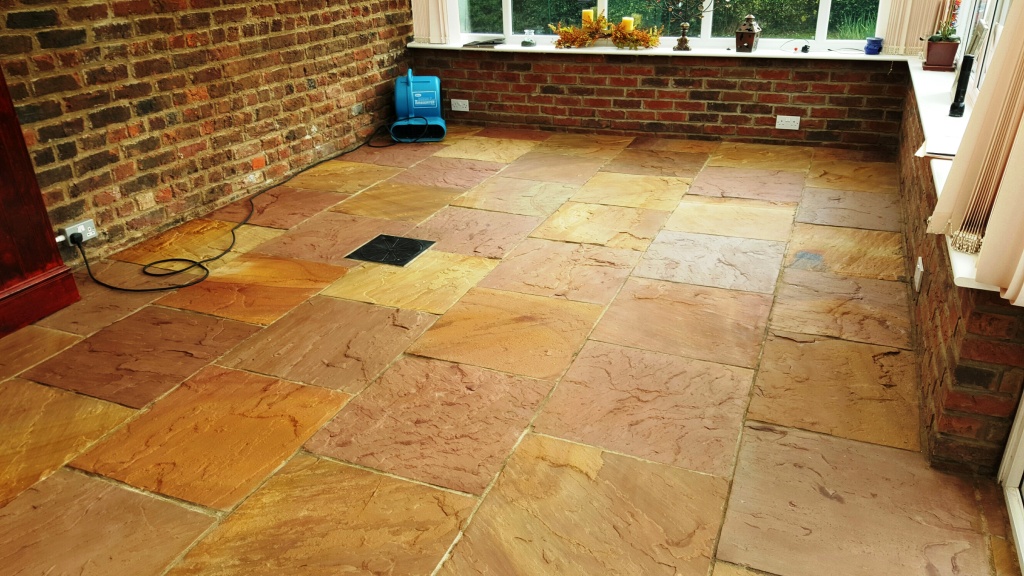 My client was delighted with the results and I think you will agree the floor looks transformed and much more appealing. Additionally the sealer is now protecting the stone from staining and liquids form puddles on the surface of the tile instead of soaking into its pores.
My client was delighted with the results and I think you will agree the floor looks transformed and much more appealing. Additionally the sealer is now protecting the stone from staining and liquids form puddles on the surface of the tile instead of soaking into its pores.
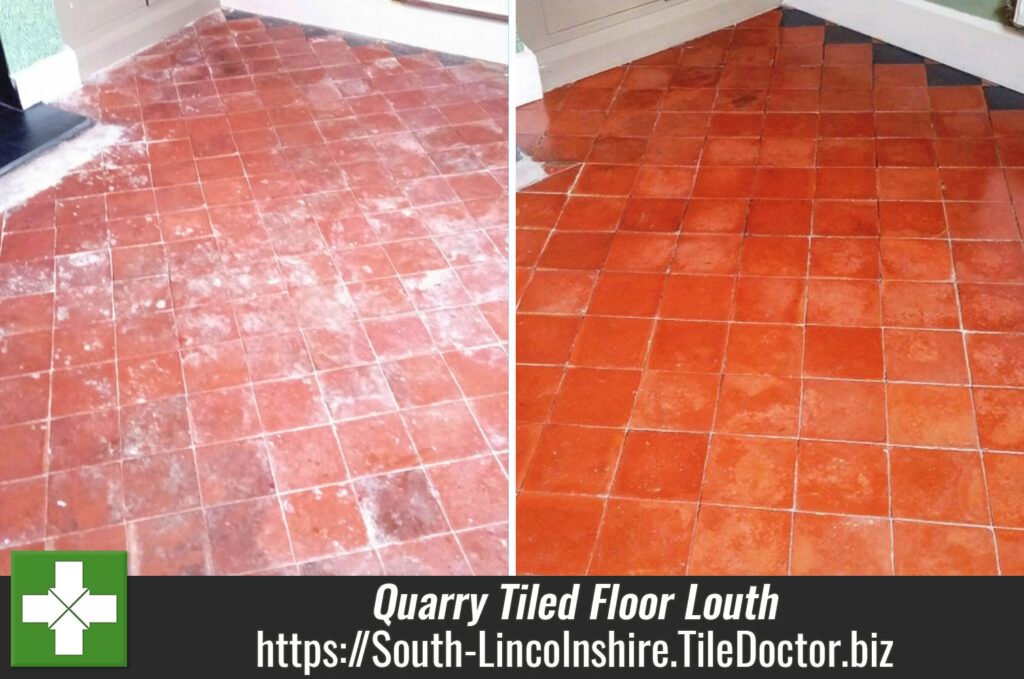




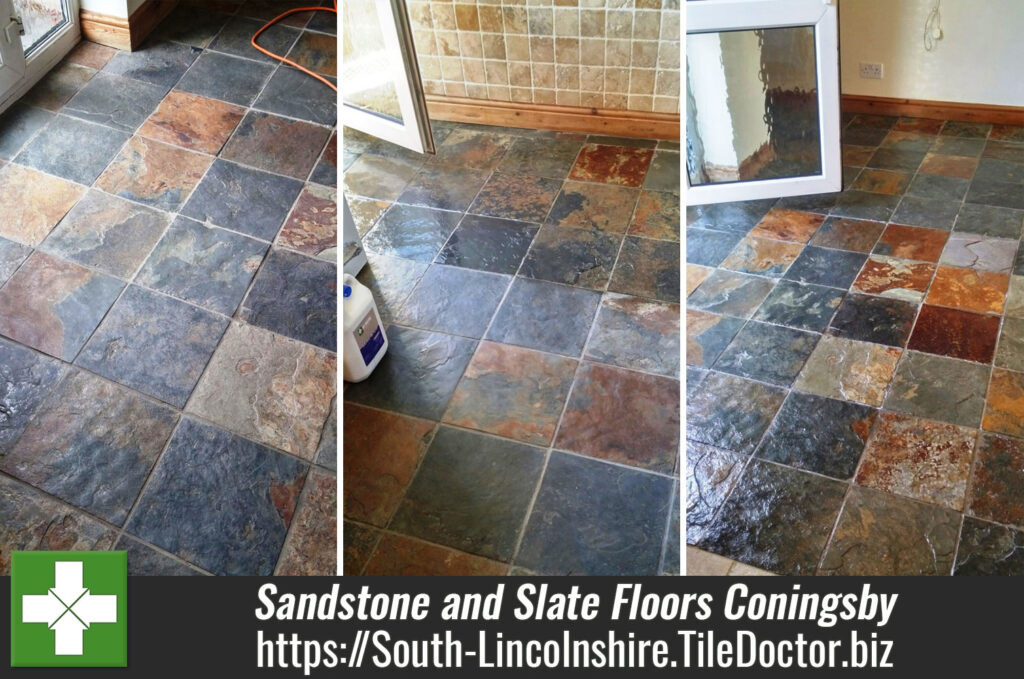


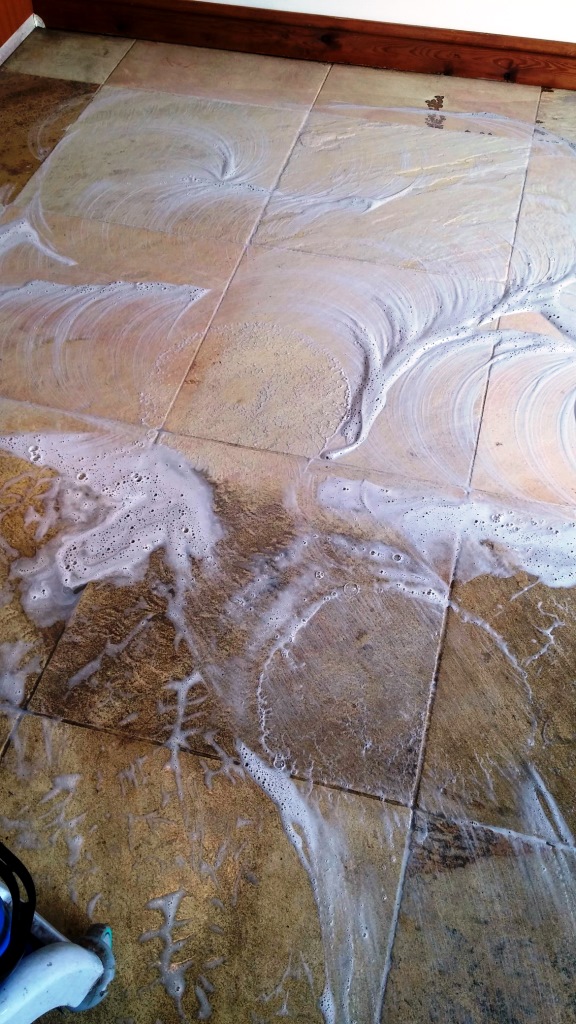 To extract the now soiled cleaning solution the floor was rinsed using water which was then extracted using our wet pick up system. Once the floor was clear we were able to see where more work was required and the process was repeated until we were happy the floor was thoroughly clean and free of any remaining sealer.
To extract the now soiled cleaning solution the floor was rinsed using water which was then extracted using our wet pick up system. Once the floor was clear we were able to see where more work was required and the process was repeated until we were happy the floor was thoroughly clean and free of any remaining sealer.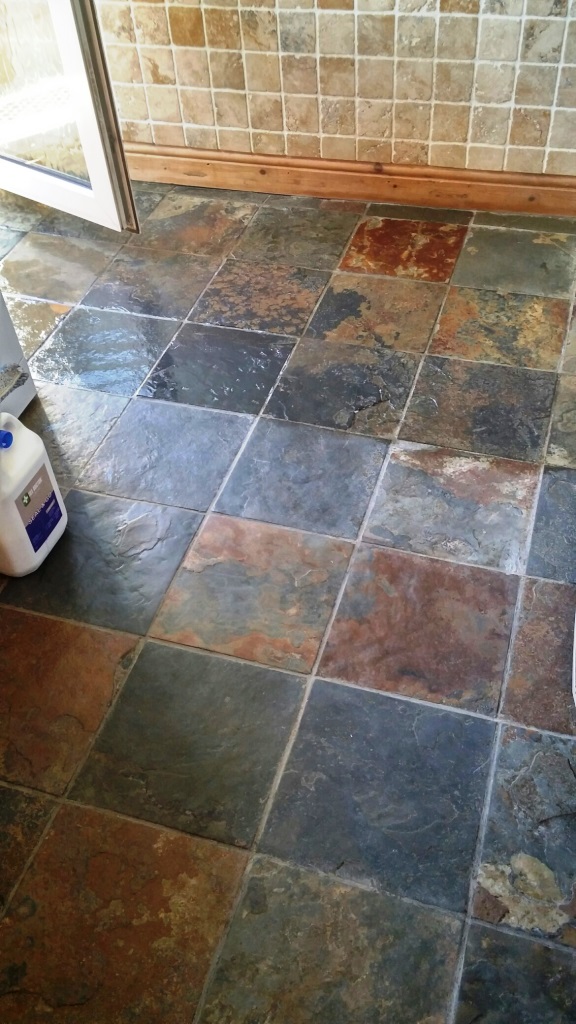 The customer was delighted with the results and left an excellent review which you can read below:
The customer was delighted with the results and left an excellent review which you can read below:

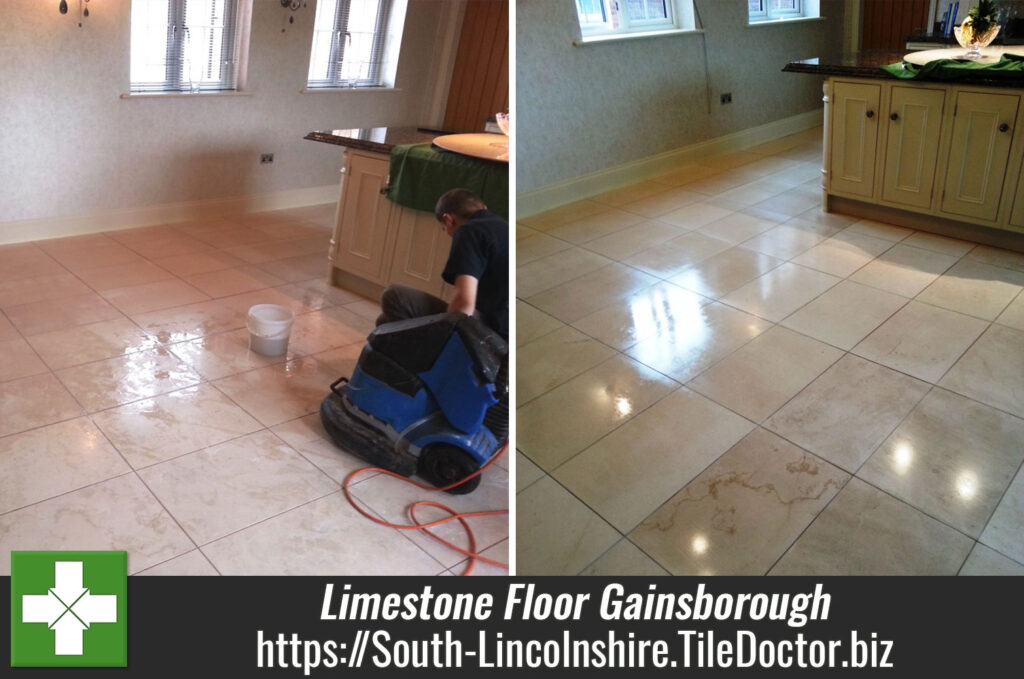





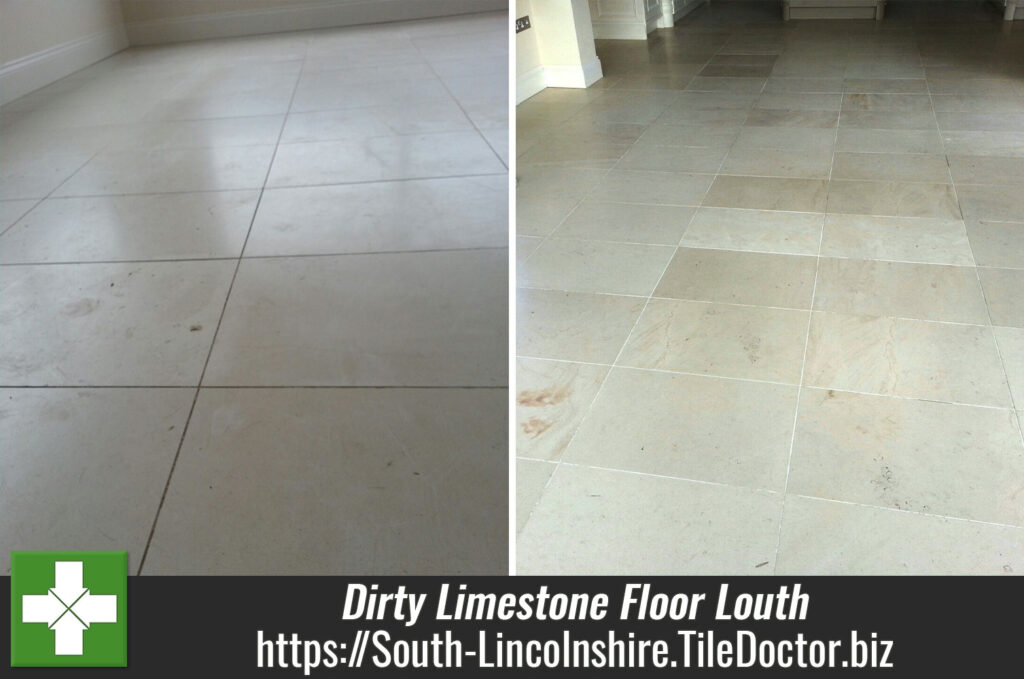






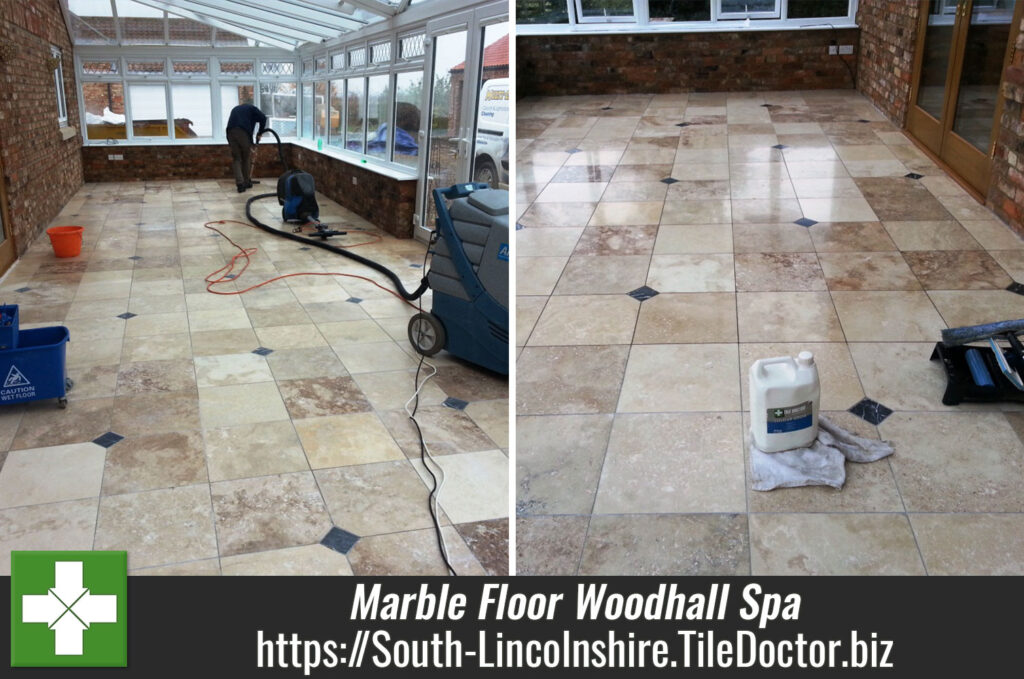

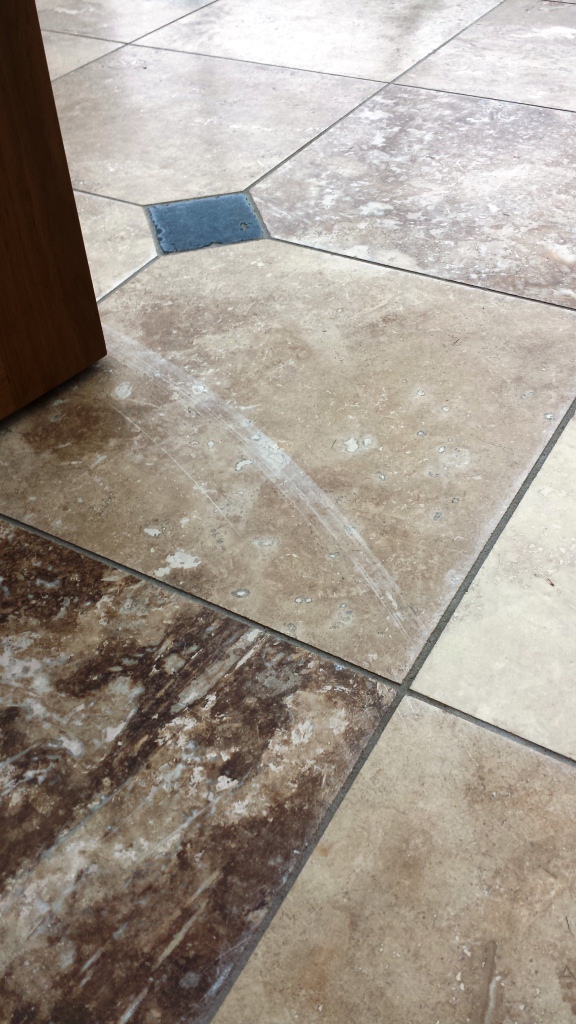
 The process starts with the coarse pad which strips back the top layer and removes sealers and dirt from the surface of the stone. The pads then become finer and finer with the last pad being a final polish that takes the tile back to near it’s originally intended shine. You can see from the photographs that we actually managed to resurface the marble, remove the scratches and we also filled in some small holes and then allowed the floor to dry overnight helped by our turbo drying system allowing for minimal drying times.
The process starts with the coarse pad which strips back the top layer and removes sealers and dirt from the surface of the stone. The pads then become finer and finer with the last pad being a final polish that takes the tile back to near it’s originally intended shine. You can see from the photographs that we actually managed to resurface the marble, remove the scratches and we also filled in some small holes and then allowed the floor to dry overnight helped by our turbo drying system allowing for minimal drying times.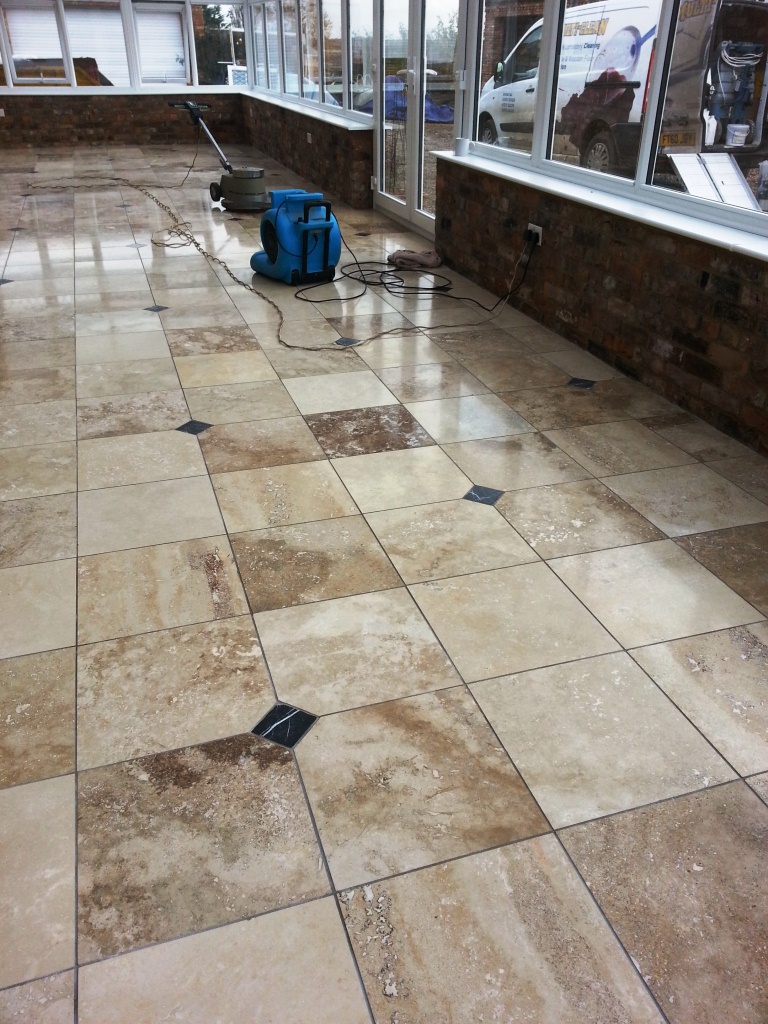
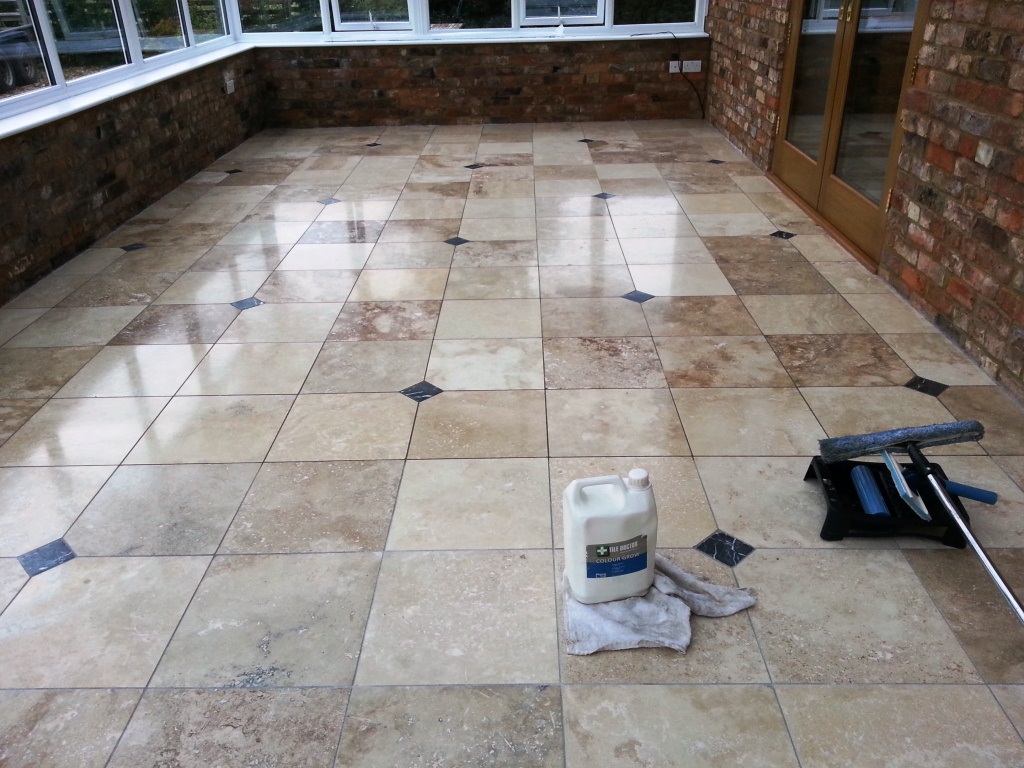 As you can see the scratches were removed and the tiles now shine and are protected and polished to a stunning finish that the customer was over the moon with and couldn’t thank us enough for the professional and excellent job on time and budget.
As you can see the scratches were removed and the tiles now shine and are protected and polished to a stunning finish that the customer was over the moon with and couldn’t thank us enough for the professional and excellent job on time and budget.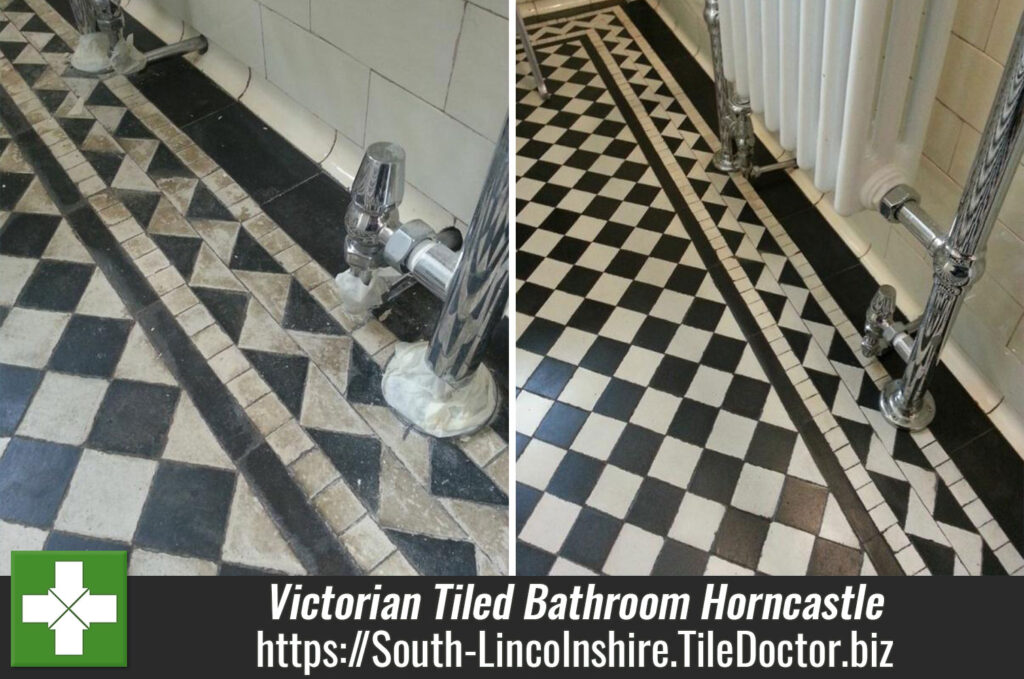



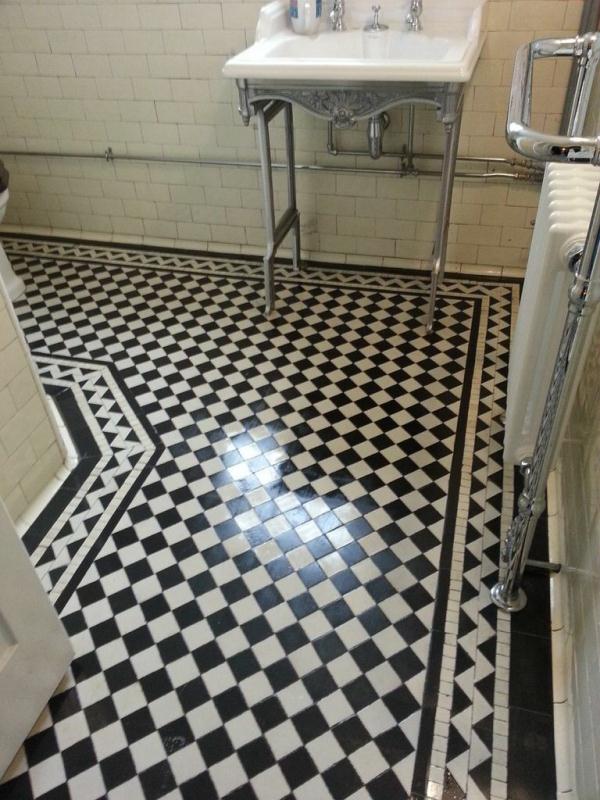
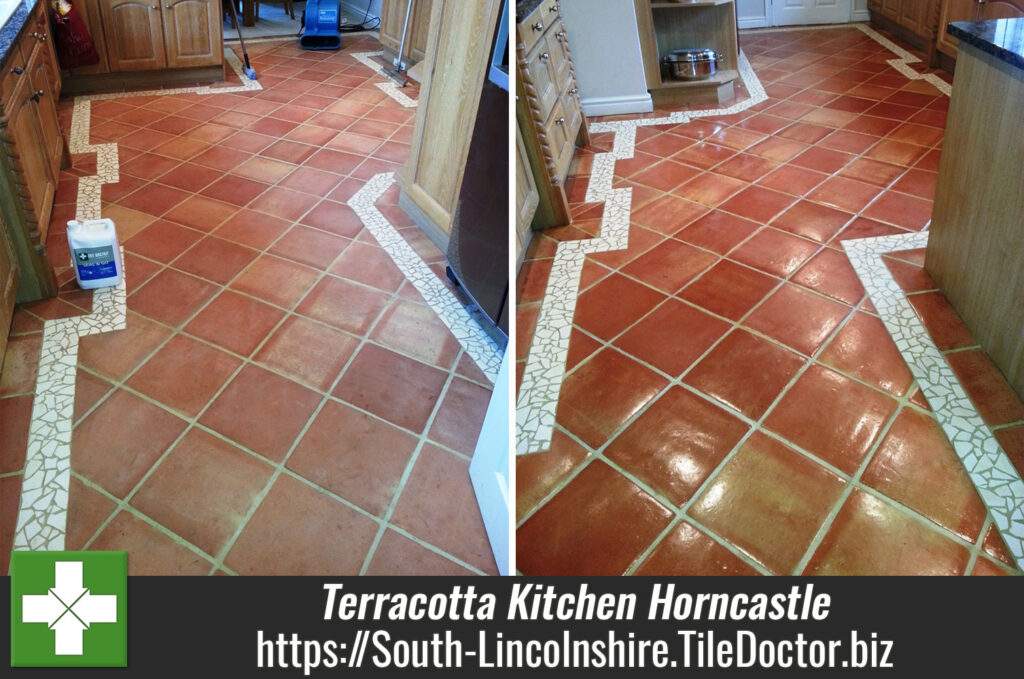
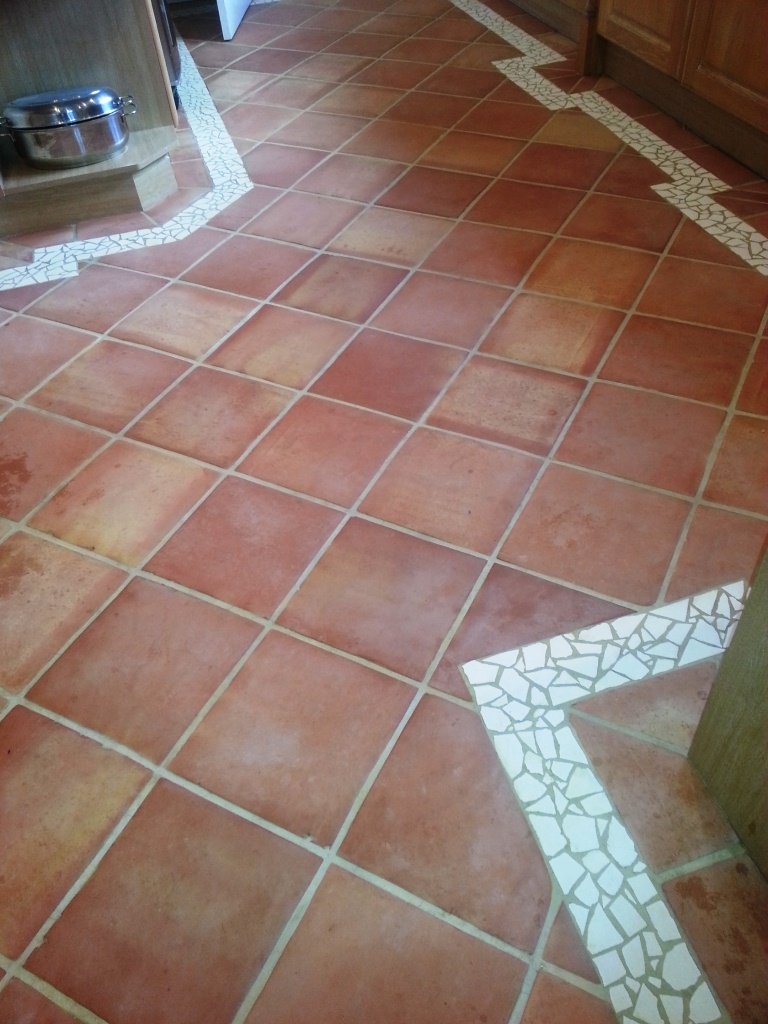
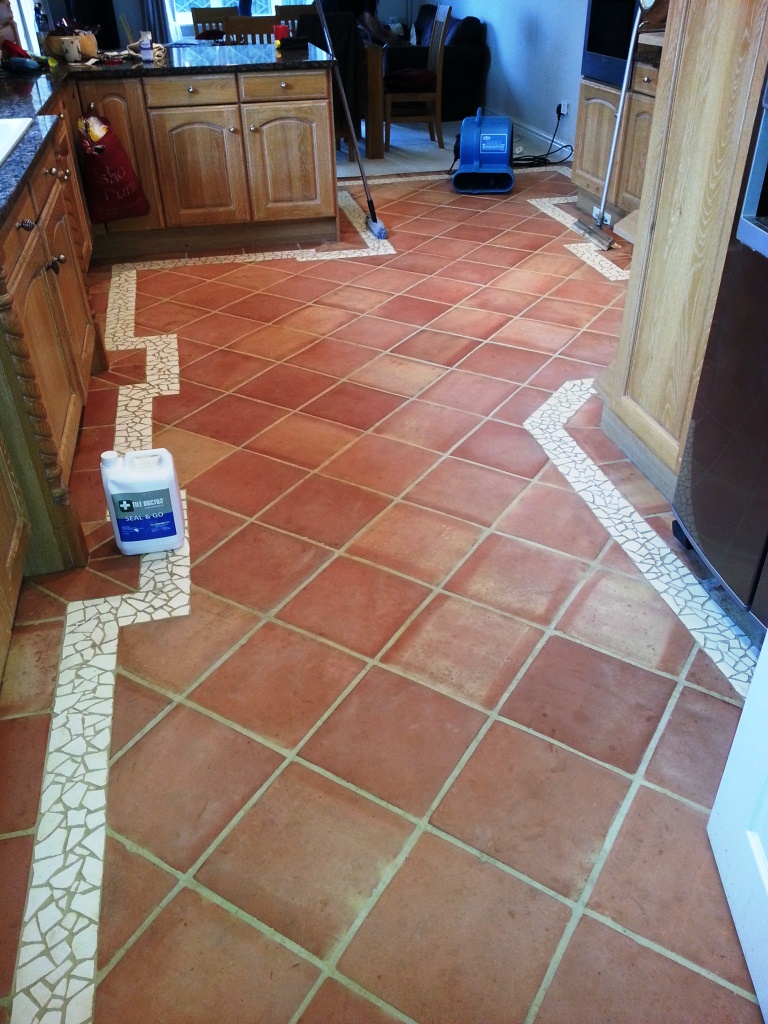
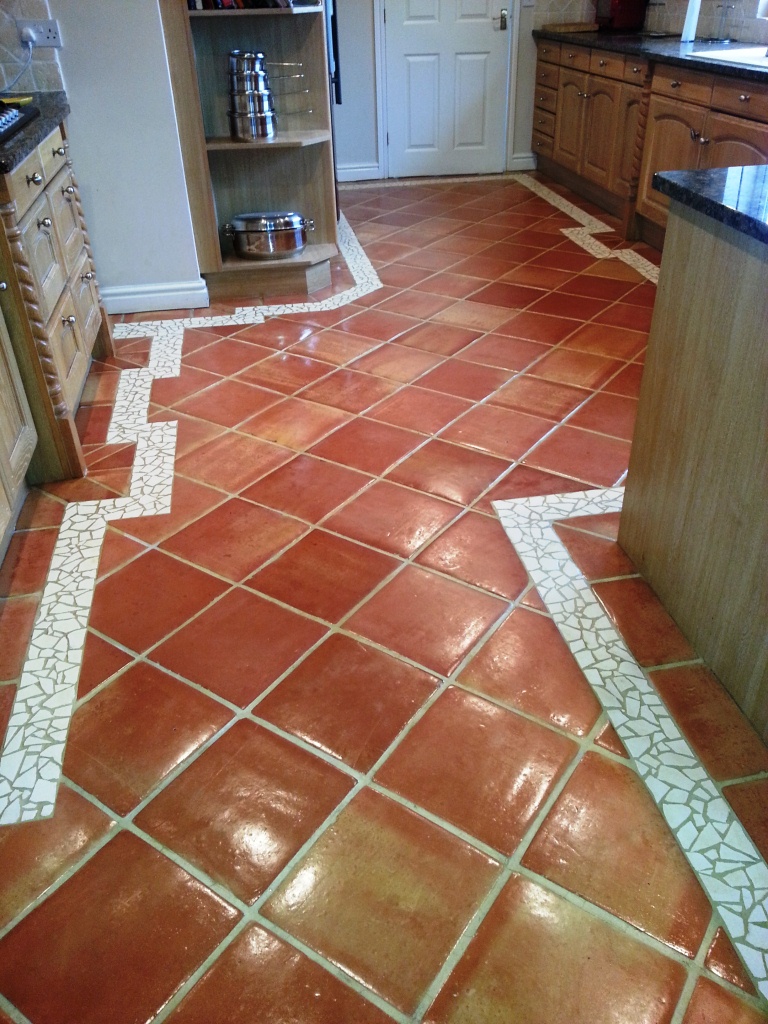 The work took two days in all, you can see the difference for yourself.
The work took two days in all, you can see the difference for yourself.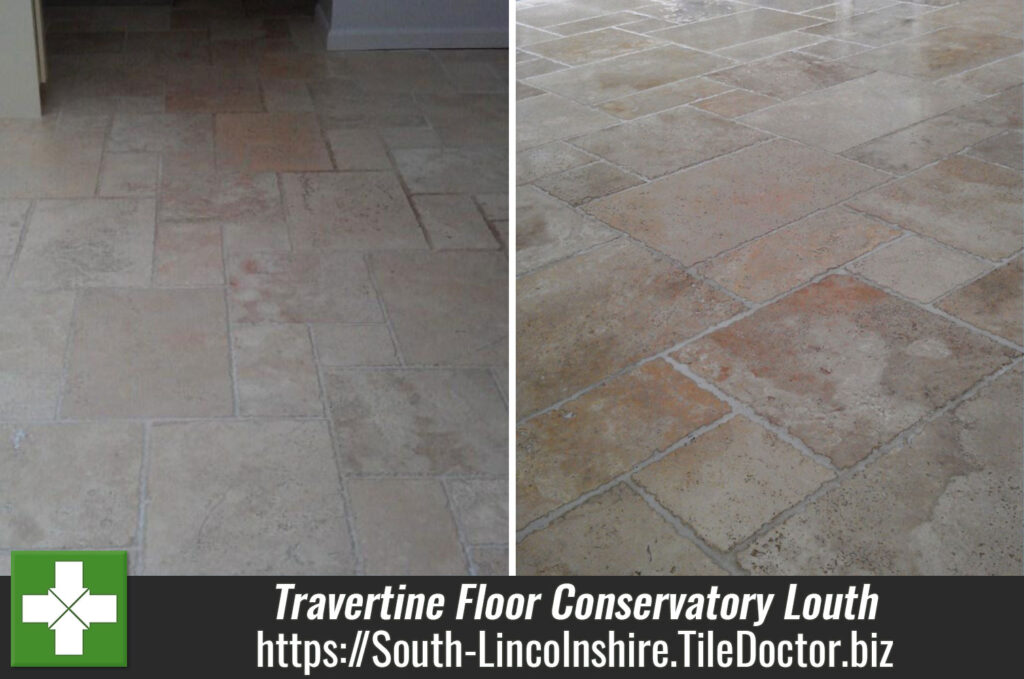


 The last step was to seal the floor which we did using two coats of
The last step was to seal the floor which we did using two coats of 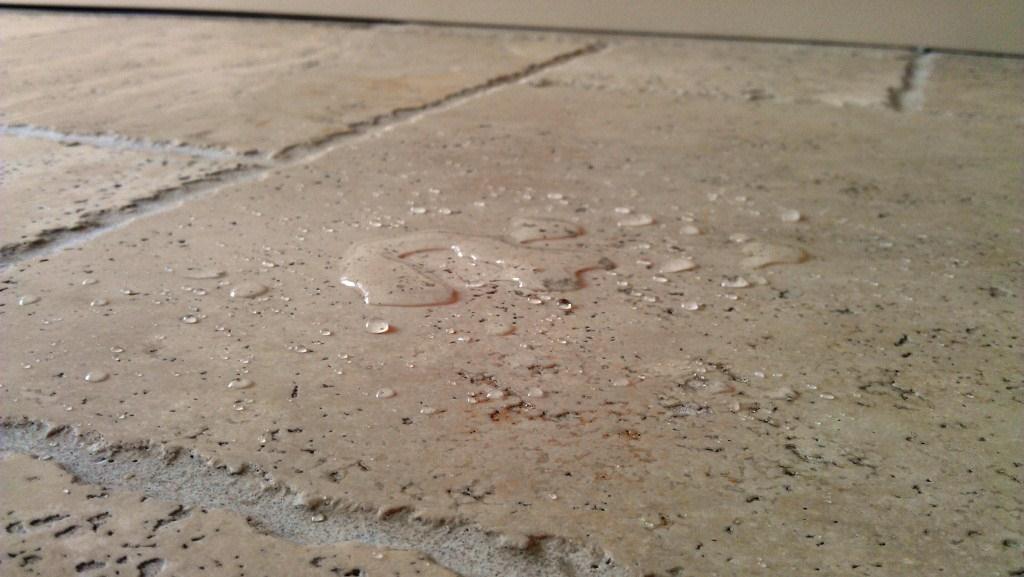 The last photograph shows the effectiveness of the sealer on the surface of the tile, without a sealer the water would have soaked into the travertine, with a sealer it bubbles on the surface allowing spillages to be removed easily before they have chance to stain the stone.
The last photograph shows the effectiveness of the sealer on the surface of the tile, without a sealer the water would have soaked into the travertine, with a sealer it bubbles on the surface allowing spillages to be removed easily before they have chance to stain the stone.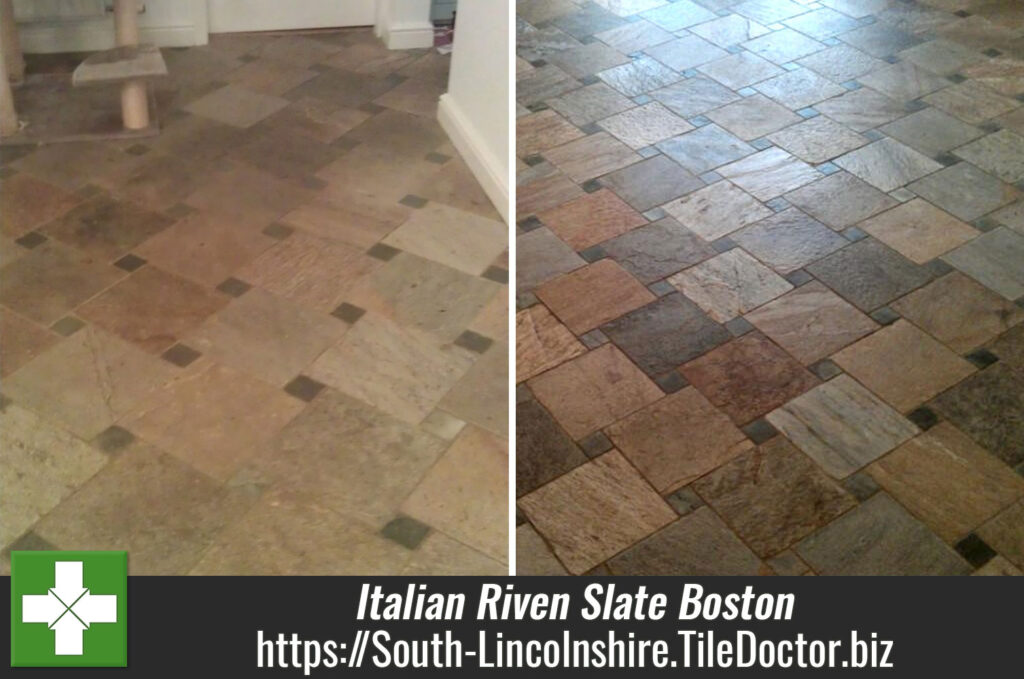

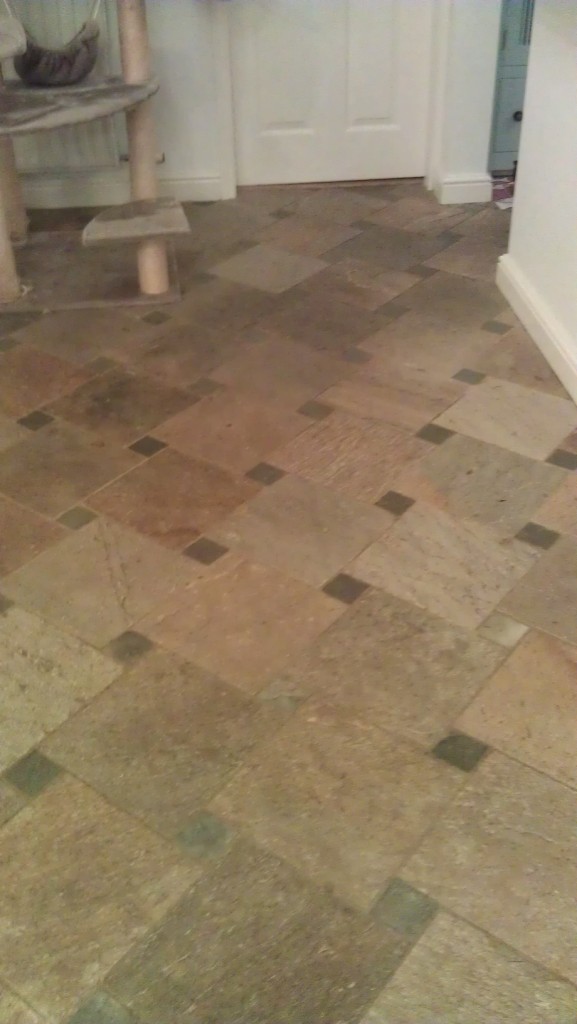
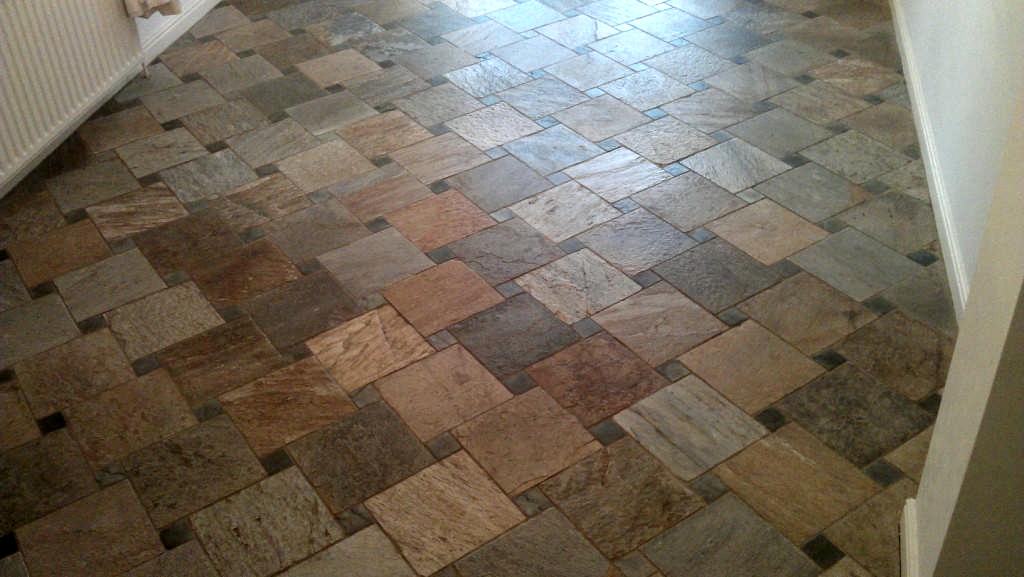 The job took two days in total and the customer was absolutely delighted with the improvement in the floor.
The job took two days in total and the customer was absolutely delighted with the improvement in the floor.